Causa (Washington, DC)
Causa Restaurant
920 Blagden Alley NW, Washington, DC 20001
202-629-3942
www.causadc.com
Wed 02/28/2024, 08:30p-12:20a
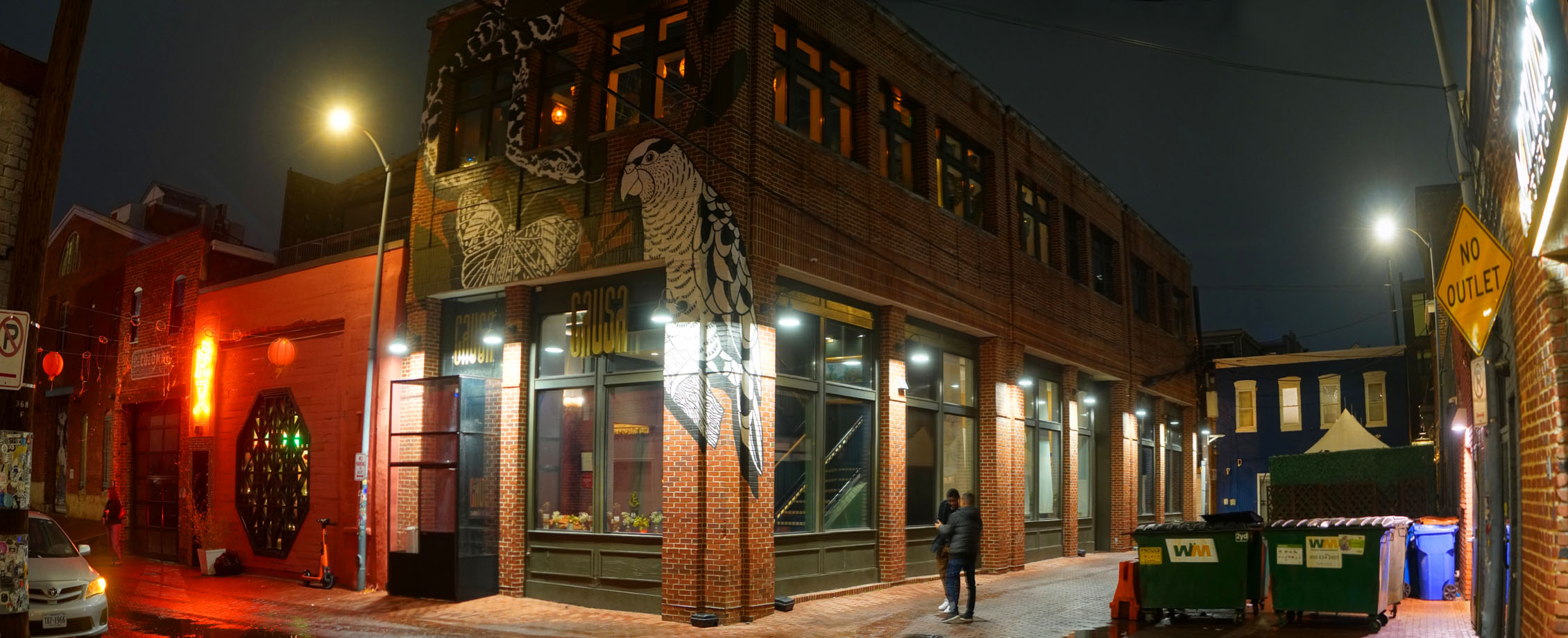
For the final meal of my latest trip to DC, I ventured out to Shaw's historic Blagden Alley to check out a place that I'd wanted to try ever since it opened back in 2022. Causa is a tasting menu-only, seafood-focused, Michelin-starred contemporary Peruvian spot from Chef Carlos Delgado, in partnership with Chad Spangler and Glendon Hartley (the guys behind Service Bar), and has been generating quite a bit of buzz over the past year or so. Note that Causa is only one part of a dual-concept restaurant, with the upstairs Amazonia being more of a casual eatery with its bar and outdoor seating.
About the Chef: Delgado was born in 1990, and hails from La Perla, a district in the port city of Callao, near Lima. He first got interested in food thanks to his grandmother, and started cooking while he was still in Peru. He immigrated to the US around age 11, and began working in kitchens professionally when he was 16, without any formal training. After graduating from Walter Johnson High School in 2008, he applied to the Culinary Institute of America the following May, but didn't end up attending. Early on in his career, Delgado was able to work at Bryan Voltaggio's Volt, and apparently even staged at El Bulli.
However, it was only in 2011 that he began making a name for himself as CdC at the now-shuttered Smith Commons, located on DC's H Street Corridor. He was named Exec Chef there in 2012, but left that same year to join the opening team at Bóveda, a Latin American spot in the West End. In May 2013, while still at Bóveda, he launched a bicycle-based ice cream sandwich concept called CreamCycle, then went to cook at The Caucus Room Brasserie and develop the menu for Smith Public Trust. From there, Delgado opened Peruvian eatery Ocopa in August 2014 as Executive Chef/Partner, but only stayed for about a year (it was there where he would first meet Hartley, who was helming the bar program).
In September 2015, he went to work at José Andrés' China Chilcano. He started out as a sous, but was promoted to head chef a year later, following the departure of Omar Rodriguez. Things were going relatively well until the pandemic, when Delgado was furloughed (though he was later brought back in a consulting role the following March). He subsequently helped with the debut of Taqueria Xochi, the brainchild of Teresa Padilla (his pastry chef at China Chilcano), then teamed up with Hartley and Spangler. The Service Bar guys had taken over a newly-constructed building in Blagden Alley back in 2019 (next door to the old Rogue 24), which was initially supposed to be an outpost of Jose Garces' Village Whiskey. Initial plans were to debut a pandemic-friendly, ceviche- and anticucho-focused spot called Chelita (named after the Chef's abuela), but that never came to fruition.
Instead, Amazonia dropped on May 4th, 2022, while Causa bowed that August, to almost immediate acclaim no less. In January 2023, Causa landed the #8 spot on Washingtonian's list of "The 100 Very Best Restaurants," while just a couple months later, the place was deemed a "Best New Restaurant" finalist by James Beard. In May 2023, The Washington Post gave Amazonia/Causa the top spot on its Spring Dining Guide. This was followed a couple months later by a "New Restaurant of the Year" win at the RAMMY Awards. Causa received a Michelin star in November last year, and in January, it was named the best restaurant in DC by Washingtonian.
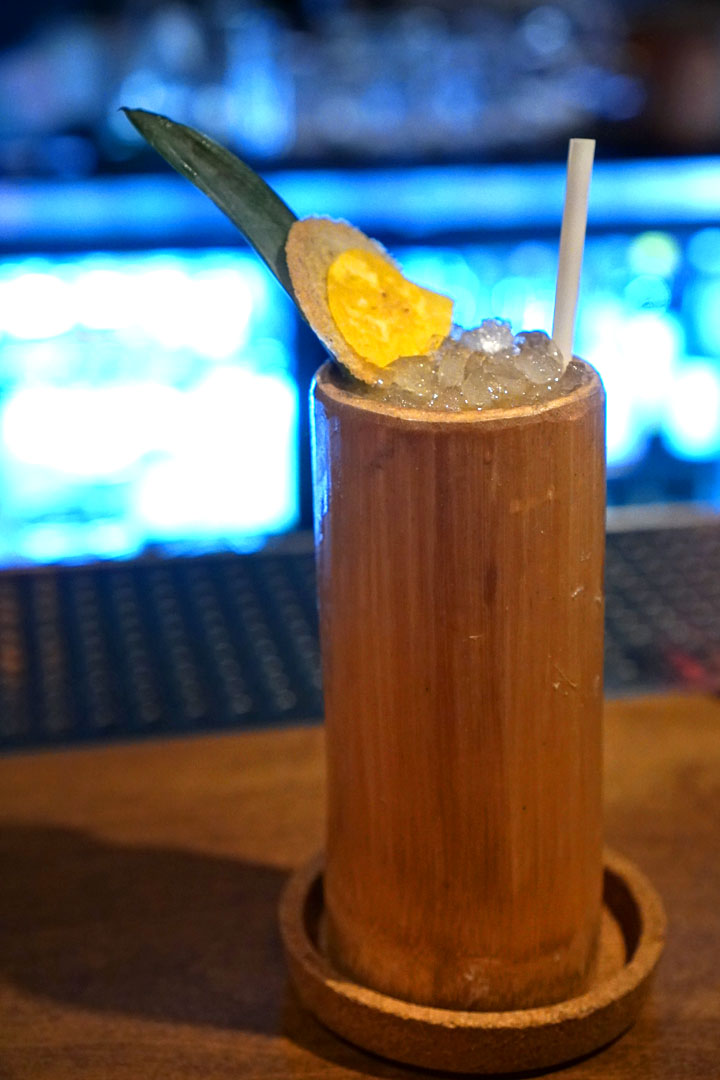
Otorongo Ciego [$19.00] | park cognac, ardbeg scotch, banana combier, crème de cacao, lime, turmeric, spices, chuncho bitters
We arrived early for our reservation, and thus headed up to Amazonia's bar to kill some time. We were able to try two cocktails, and this first one definitely showed off the peatiness of the whisky, combined with sweet-tart spices, chocolate-y notes, and just enough fruit. Multifaceted and smoky, yet refreshing.
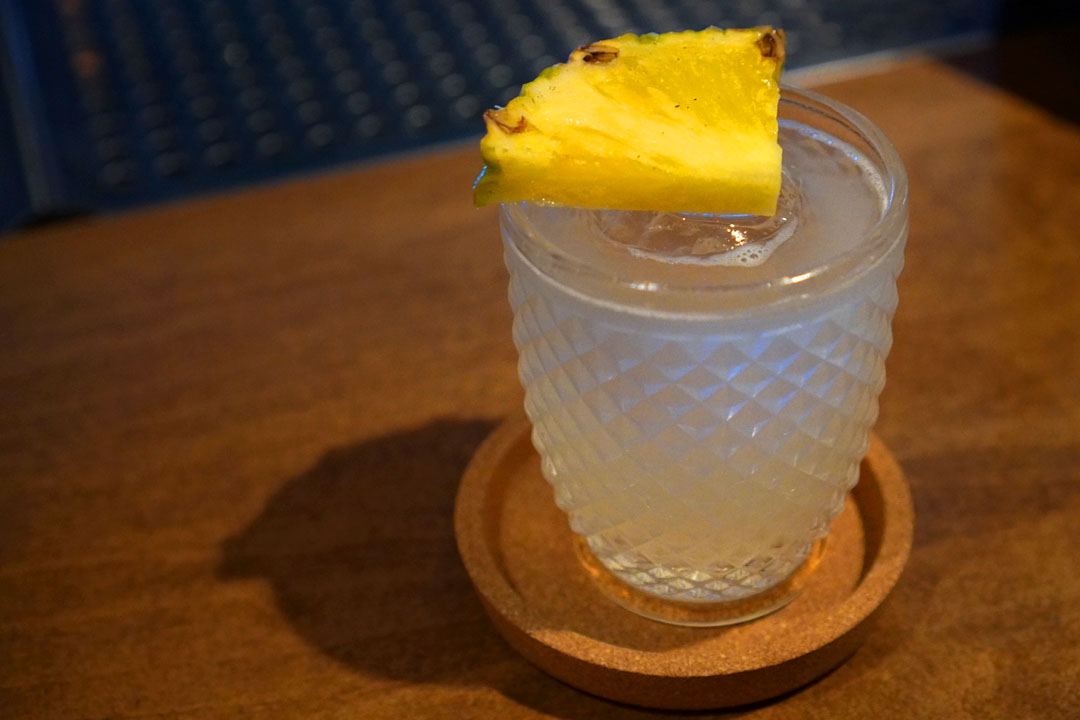
Sana Sana [$17.00] | Fords Gin, Clarified Pineapple, Clarified acidulated orange juice, Aji Amarillo-coconut reduction
Next up was Amazonia's entry into the "Blagden Brawl" cocktail contest, which was a friendly competition between this place and nearby spots Calico, Death & Co, Lost & Found, and Tiger Fork. It was lovely, and the first thing that struck me was the perky, lingering acidity from that OJ, which formed the backbone of the drink. I also got overarching nuances of pineapple, while the ají came through on the finish.

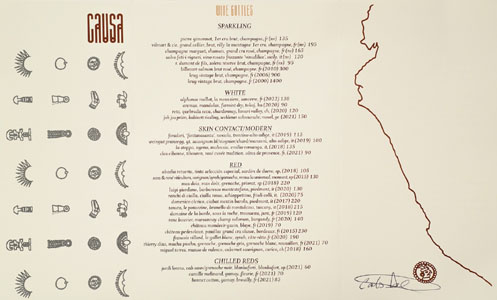
The evening's menu is shown above, and was priced at a pre-paid $175 a head (up from the previous $125, and only $85 when the place first opened), plus $35 service, $21 tax, and a $5 Tock order fee. Beverage-wise, there's a wine pairing at $125, along with a small selection of cocktails, a couple beers, and a compact, Old World-leaning wine list. Corkage is $50 a bottle, or $75 per magnum, with apparently no limit, though our fees tonight were comped, I'm guessing because we shared our booze generously with the Chef and his staff. Click for larger versions.
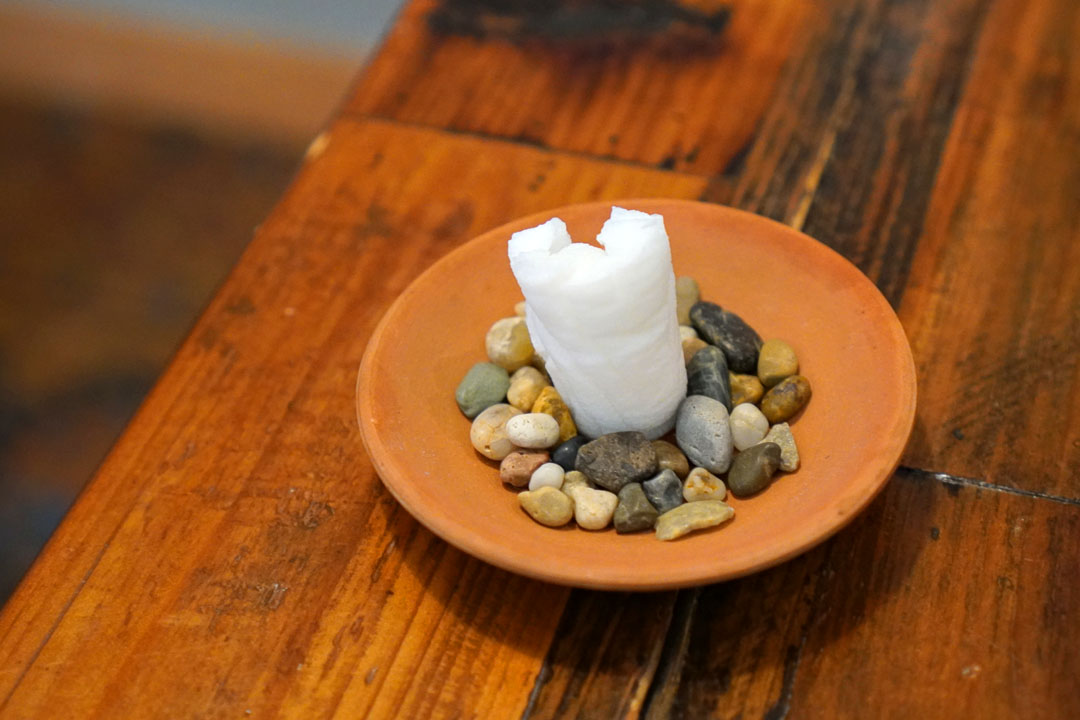
Upon being seated, a towelette was quickly provided to us. It was moistened with agua de florida, a sort of aromatized water traditionally used for aromatherapy and cleansing rituals in Peru.
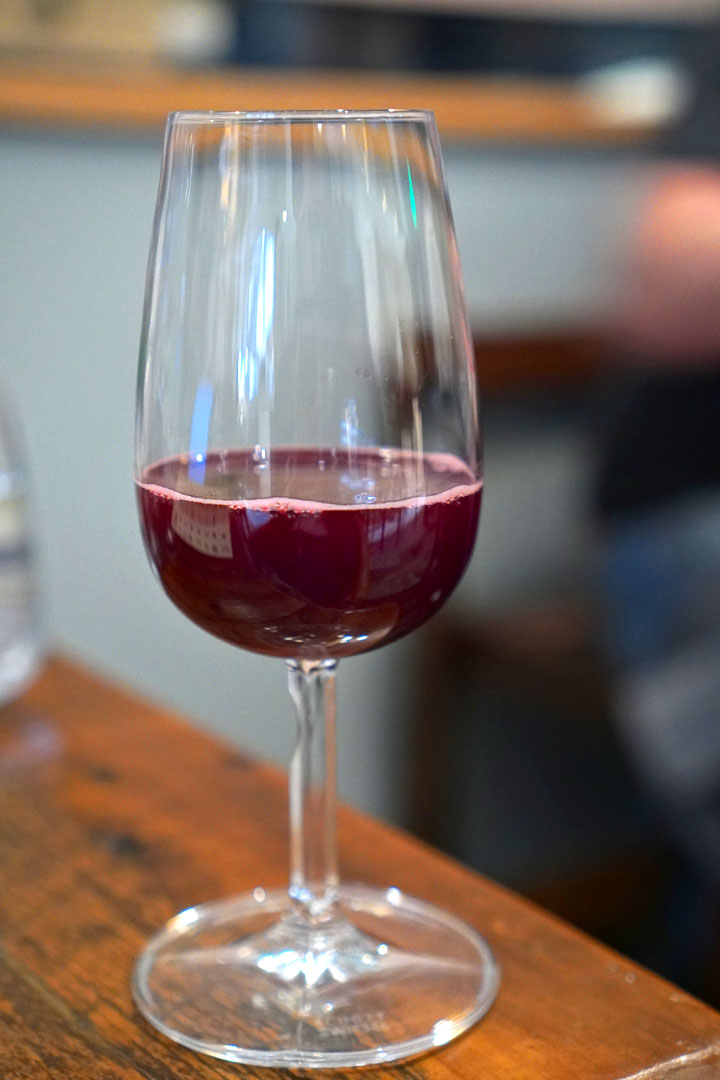
We were then presented with a house-fermented chicha morada kombucha, which served as a welcome beverage. The drink demonstrated a generally sweet-n-spicy character, but one perked up by a zippy, funky astringency and hints of citrus. It certainly did a nice job awakening the palate.
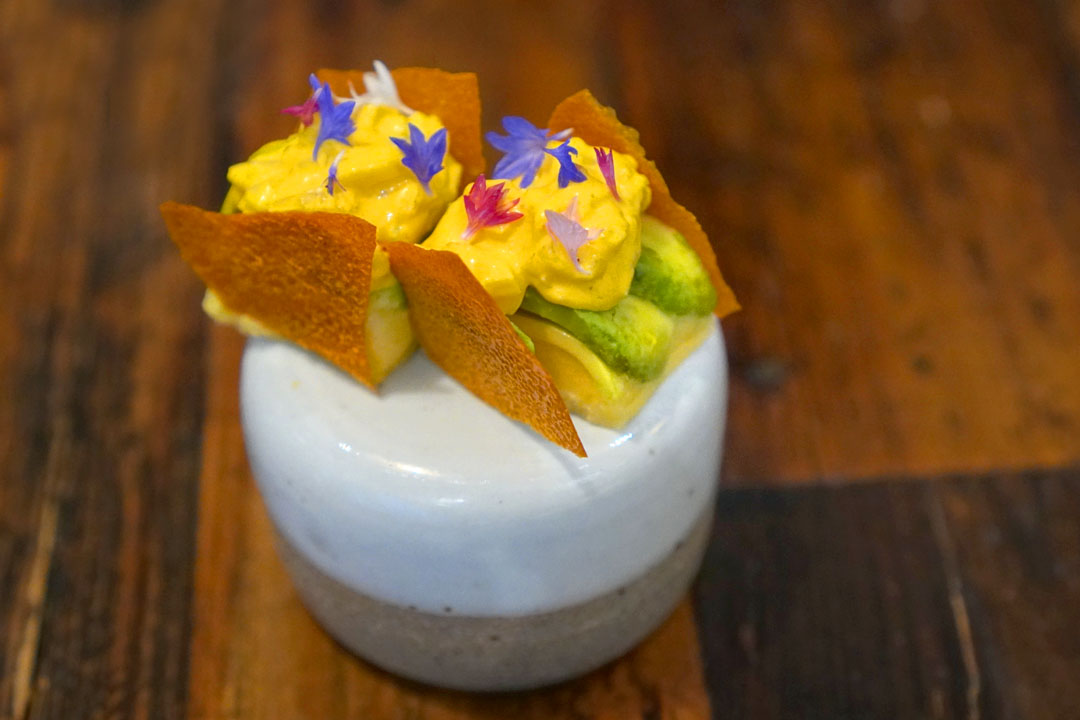
Canapé duties were handled by the restaurant's namesake dish. Tonight's version of the iconic causa limeña comprised yellow potato, ají amarillo, lime, salt, cucumber, avocado, and a scallop salad (celery, onion, ají amarillo aioli), all encased in sheets of onion "paper" to enable easier eating. The key for me was how vibrantly the salinity of the scallop was conveyed, tempered by potato and augmented by the pungency of the ají, with the avocado and cucumber lightening the mood.

Next came a parade of amuse bouches. First was a tartare of bluefin (mostly otoro, but some akami), which showed off a rich umami character that was juxtaposed against capers, red onion, cilantro, tonburi, and shiso leaf, among other ingredients. I was also a big fan of the bite's crunchy fried tart shell, which was delightfully savory in its own right, almost reminding me of prawn crackers.
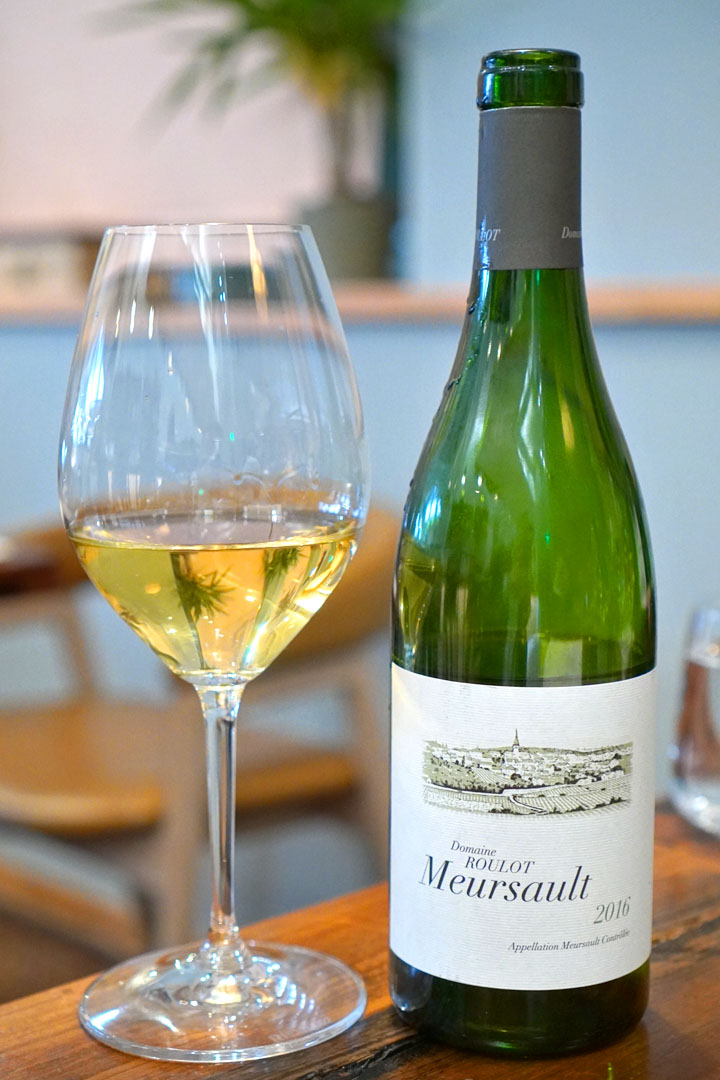
We brought along a couple bottles to drink, both of which were expertly served by Kevin, our sommelier. First was the 2016 Domaine Roulot Meursault, which was slightly closed at the beginning of the night. I got a nose of juicy yellow fruits interlaced with butter, while the palate displayed more of that fresh fruit, along with spicy oak. With more time, butterscotch aromas appeared, but quickly dissipated, replaced with tropical fruits; taking a sip, I found the wine drier, more mineral-driven, with a citrusy quality. With further time, the Burgundy began smelling more saline, and taste-wise, I found things soft, savory, buttery, and more harmonious overall.

Maine mussels came out lightly cooked, but were muddier tasting than I would've liked, though the bite's tangy tomato emulsion and coconut-like sweetness did help even things out.
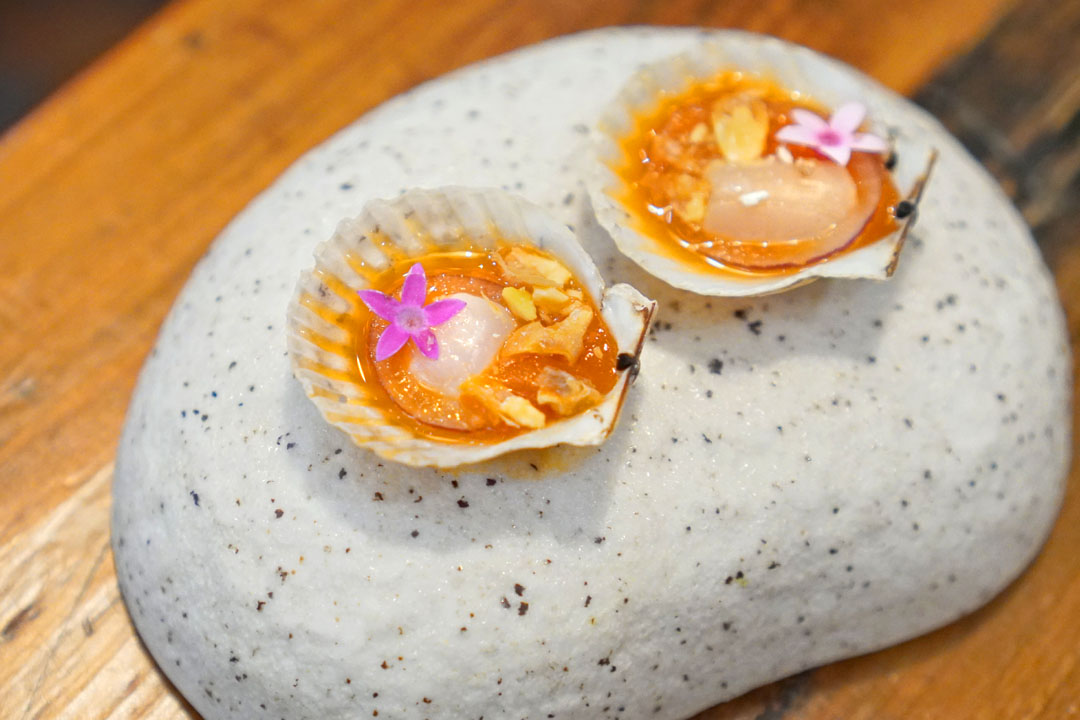
These were just about the tiniest scallops I'd ever seen, but really delivered in the taste department. I was impressed by the sharp, piercing heat present, and how that complemented, but never overwhelmed the bivalve's inherent sweetness.
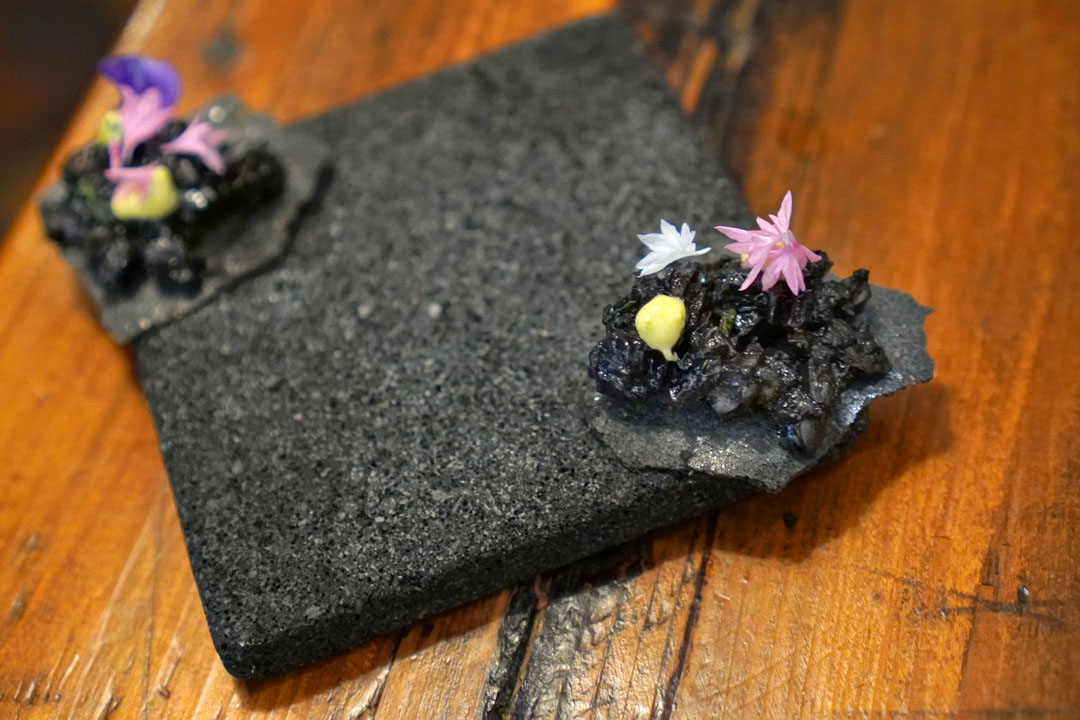
Unfortunately, I failed to note what exactly these next bites were, but I think we're dealing with a riff on the classic dish of pulpo al olivo. In any case, I really enjoyed the piquancy of those Botija olives, and how that played with the course's beguiling, floral spice and creamy avocado mousse, all while the rice crackers imparted a savory crunch to the mix.
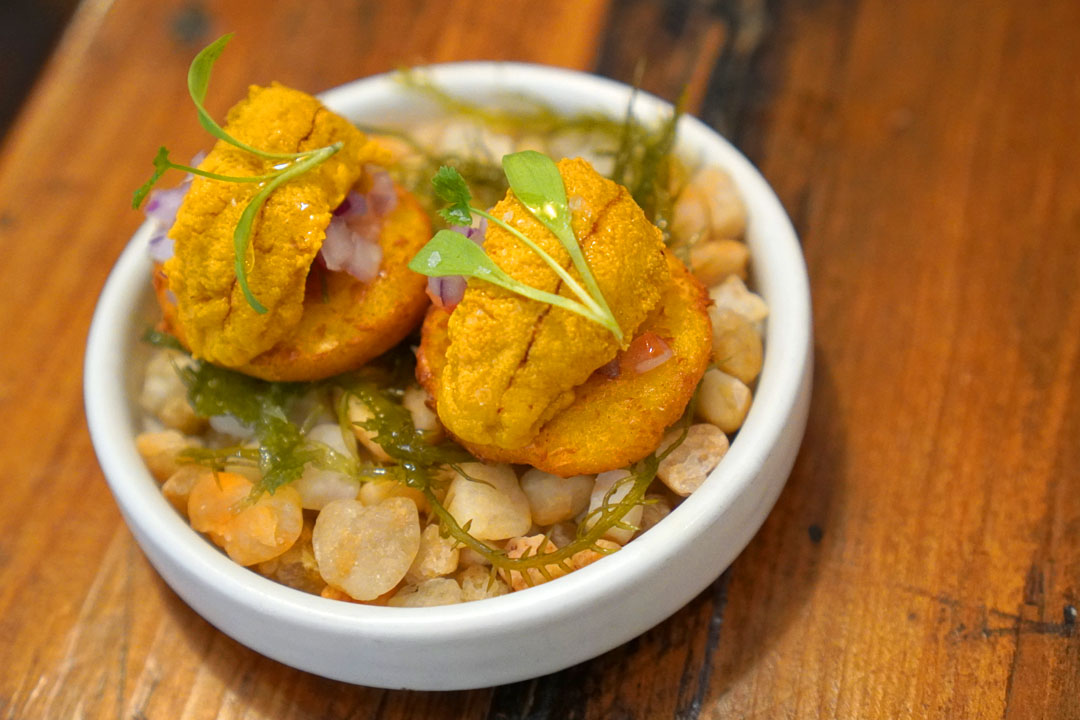
In this bonus bite, the sweet salinity of sea urchin was forcefully exhibited, set against the zippiness of onion relish and the moderating effect of a hearty Peruvian corn cake.
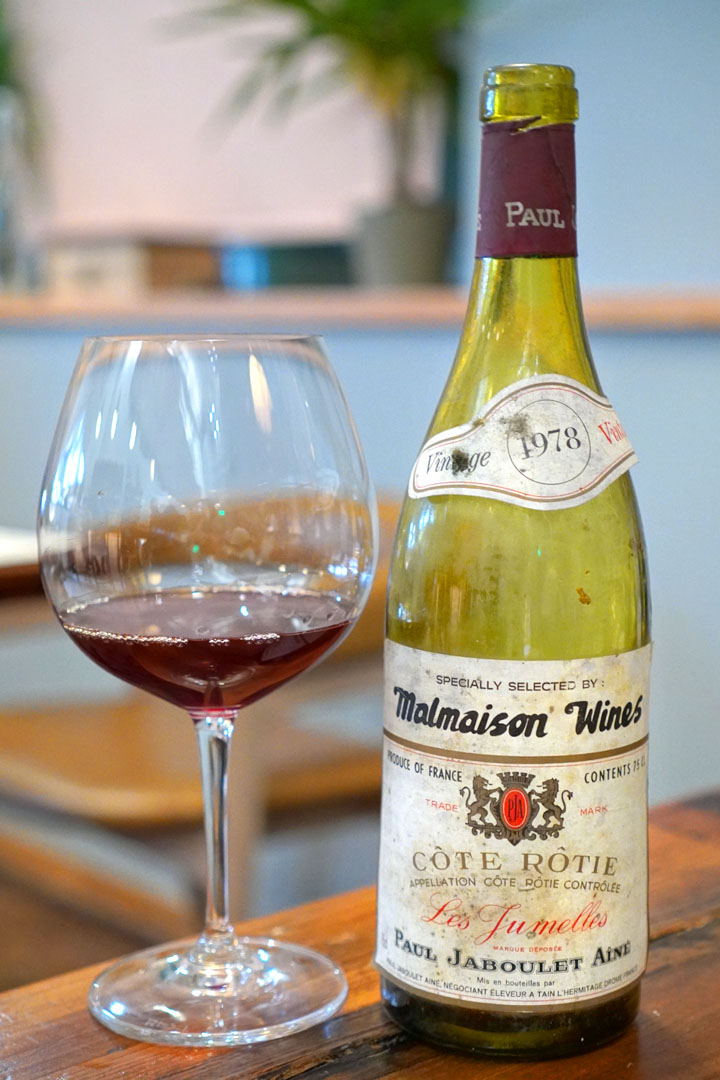
Our second BYOB bottle was something much older, the 1978 Paul Jaboulet Aîné Côte-Rôtie Les Jumelles. Initial whiffs were super meaty, almost beef jerky-esque in fact, while on the palate, the Syrah was soft and silky, its roasted meat qualities joined by tart red fruit. After some time, some cacao made itself known on the nose, while taste-wise, the wine became more astringent. With further time, the bouquet got quite a bit more herb-forward, though it was still meaty, and tasting it, I found the liquid smokier and indeed, more herbaceous. Overall, this was definitely mature, though never over the hill, and I was very glad that I got to taste it tonight.
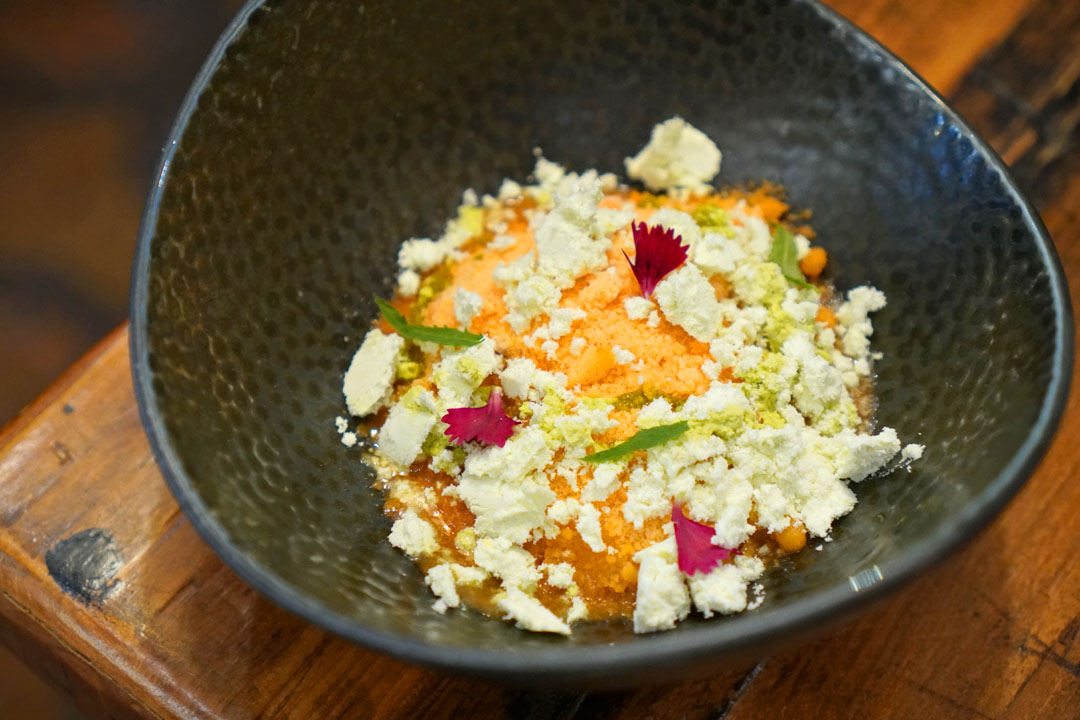
1: CEBICHE DE KANPACHI | kanpachi, rocoto, chulpi, huacatay
The meal's first proper course brought out the most unconventional looking, cleverest ceviche I'd ever seen. I loved the dish's sour heat, coconut-y sweetness, herbiness from the huacatay, and brazen acidity, which all harmonized with the amberjack without ever getting in the way. And the icing on the cake? The crunch and salt from the cancha (toasted corn). A super promising start that made a bit of a statement and really set the tone for the rest of the dinner.
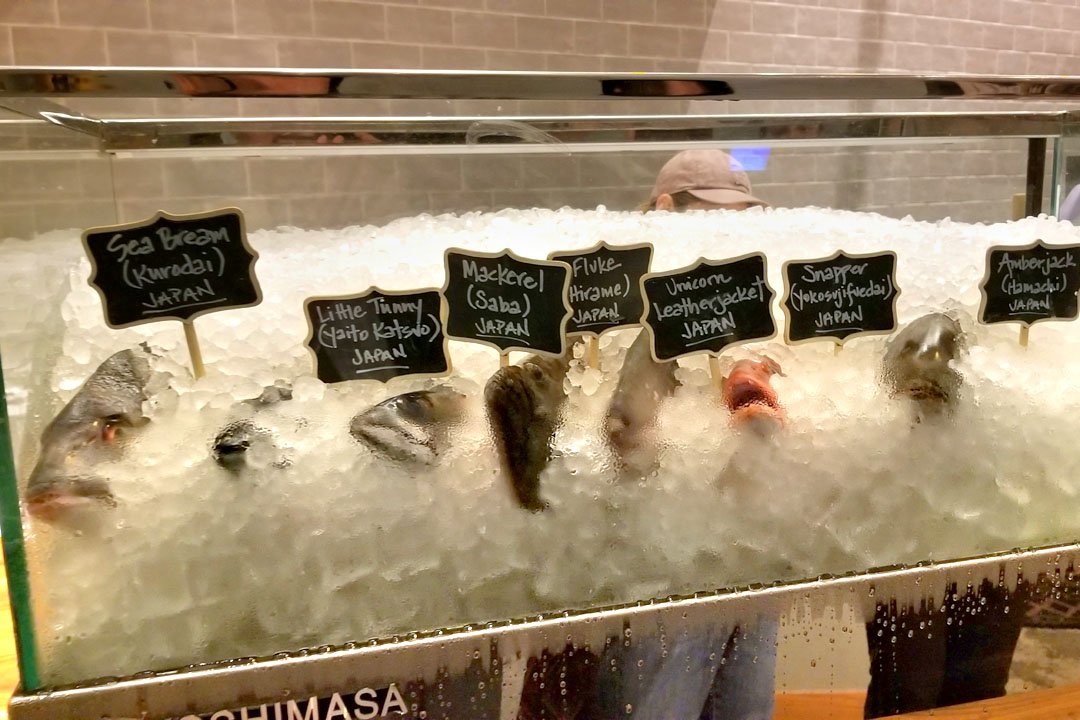
Diners at Causa can supplement their meals with a selection of whole fish from the restaurant's fish market, which can then be presented in a variety of cold and hot preparations. We opted for the uncommon Little Tunny (Yaito katsuo) 1lb 14oz, Japan [$180] (sourced from Tokyo's Toyosu Market I believe), prepared tiradito and al natural josper style, as recommend by our server.
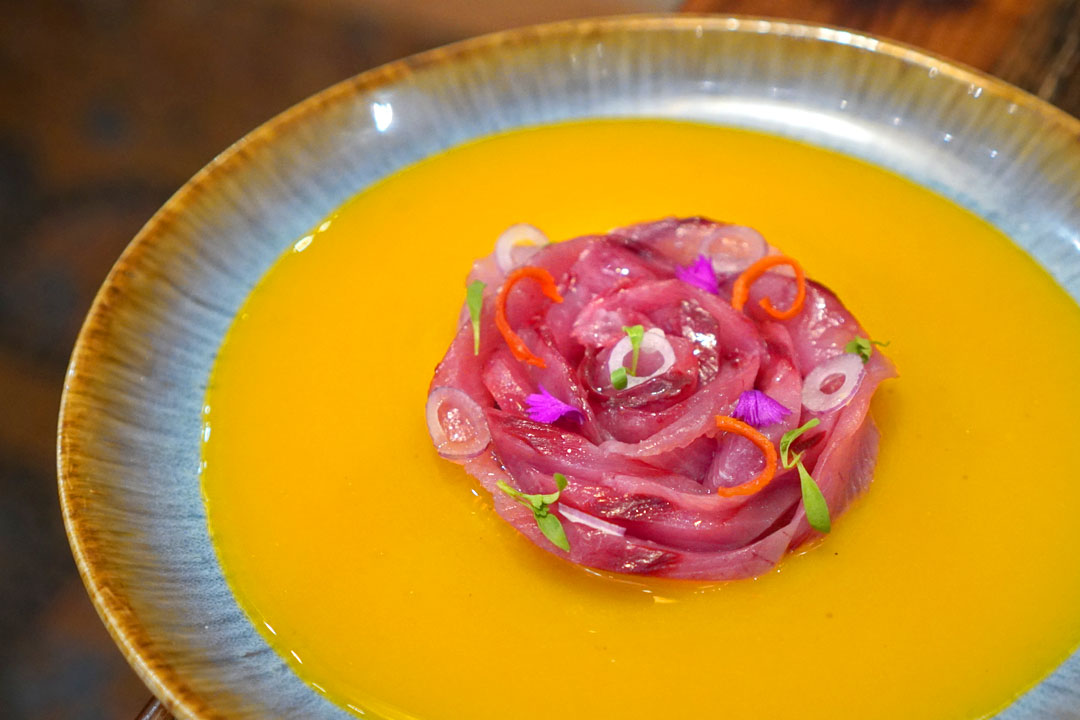
Supplement: Little Tunny (Yaito Katsuo) – Tiradito | Thinly sliced on a flat plate, and garnished with pearl red onion, cilantro, olive oil and maldon salt with ají amarillo leche de tigre. The cut for a tiradito is slightly thinner than a sashimi cut.
And here we see our selected suma katsuo, arranged in a rose pattern in what must be the most beautiful plate of tiradito I've encountered. Taken alone, the fish ate soft and supple, with a super clean, slightly sweet brine. However, the crux here was that leche de tigre, which had this wonderful acidity and delicate heat that really allowed the fruitiness of the chili pepper to shine. A consummate marriage of Peruvian flavors and Japanese technique.
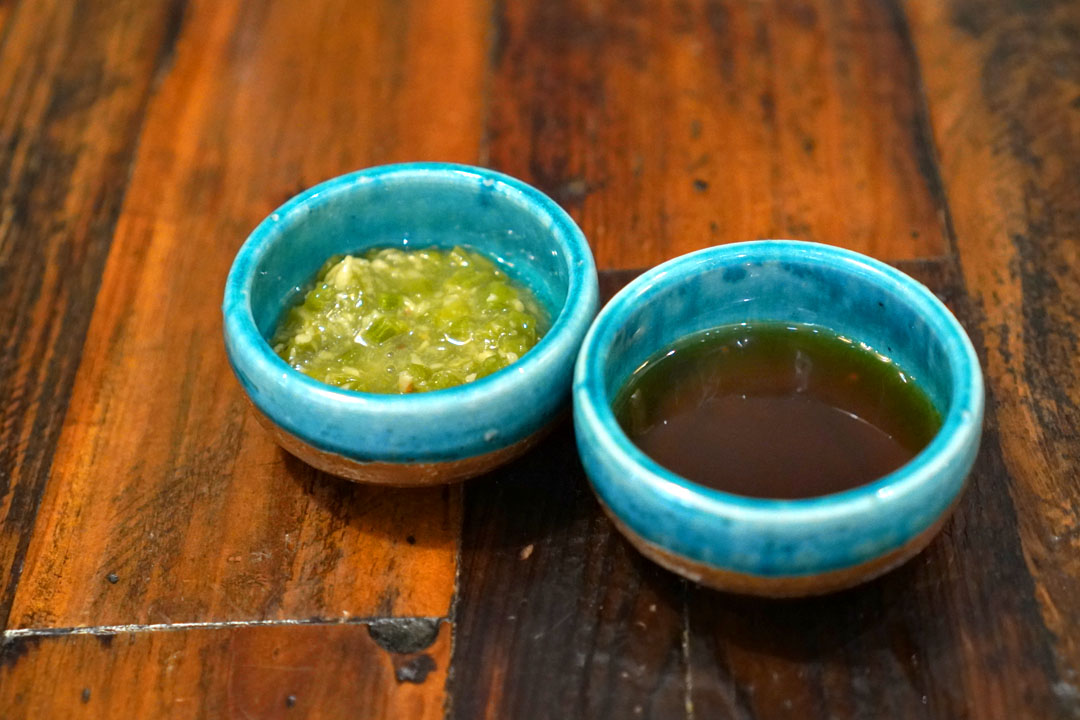
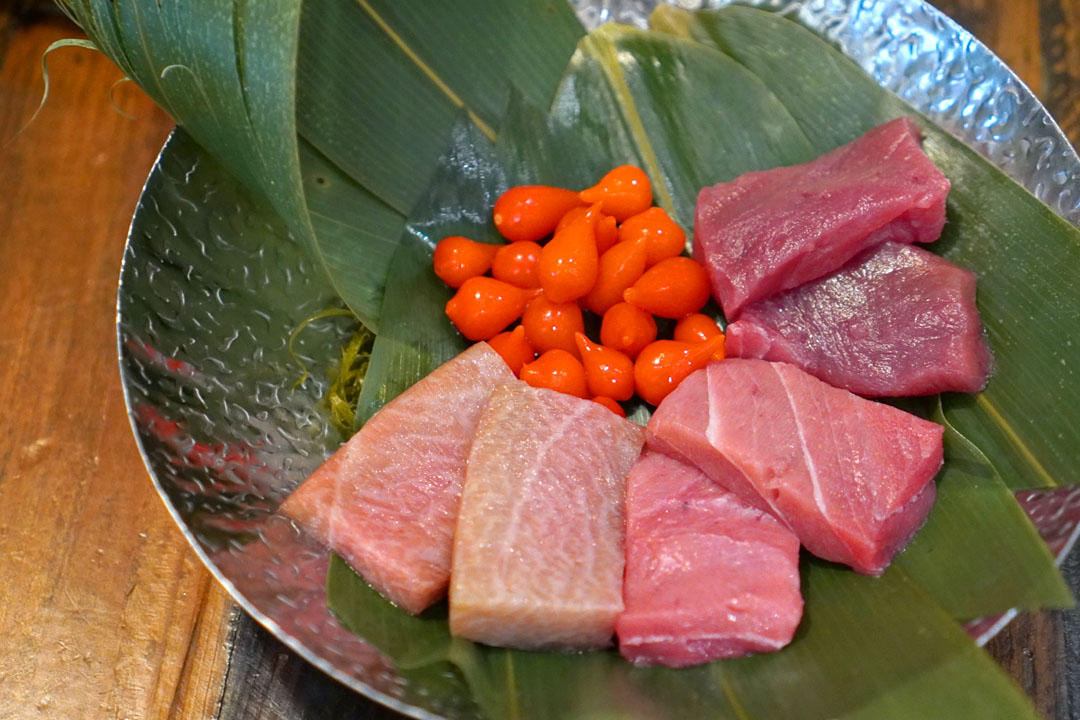
Next came an extra course of bluefin sashimi, presented in three disparate forms: two-and-a-half-month dry-aged Japanese toro, one-month dry-aged Mexican chutoro, and two-week dry-aged akami. The fish was accompanied by a yuzu-lime-ají amarillo ponzu, fermented kizami wasabi (the Chef's favorite), and pickled Peruvian sweet drop peppers. I began with the red meat, and found that it had this sophisticated umami character that worked swimmingly with either the ponzu or wasabi. The chutoro, on the other hand, was soft but sinewy, with a cool, refined brine that really linked up well with the sweet heat of the chilies. Last up was the toro, which was an altogether different story. Think ultra fatty, oily, dense, and firm--it matched perfectly with the wasabi, though with the ponzu, I wanted the savoriness of the soy to speak up more.
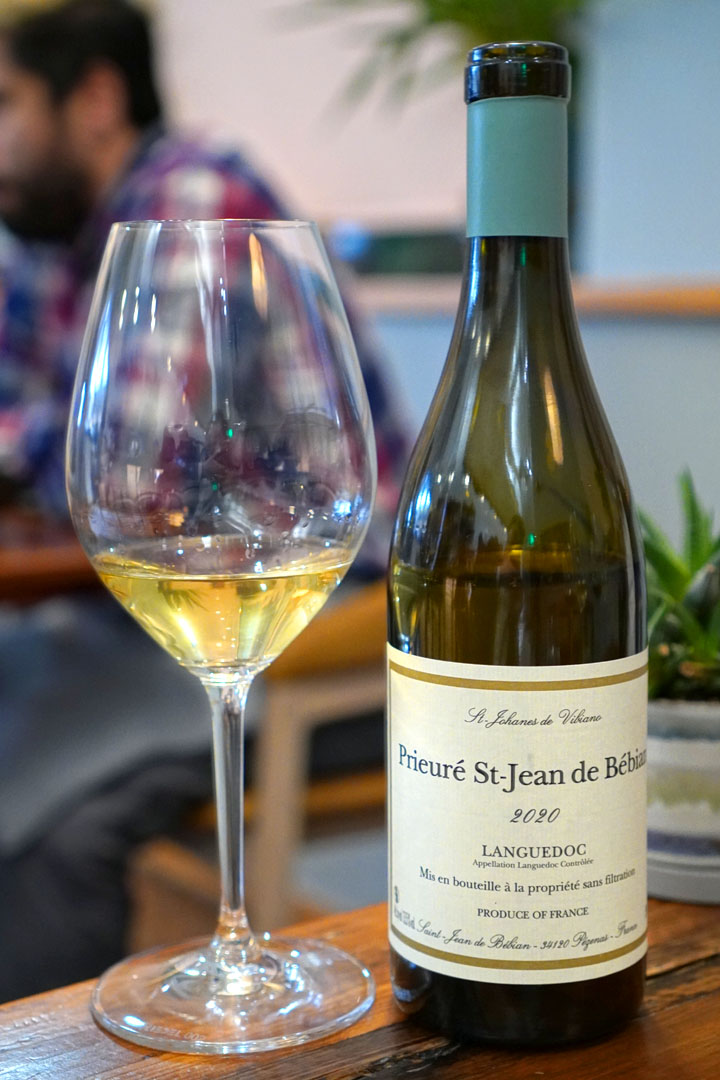
We were provided a pour of the prieuré saint-jean de bébian, coteaux du languedoc, fr (2020) to go along with the potato course below. Based on Roussanne, the wine demonstrated a generally tropical fruit-driven, yet dry style, with elements of lemon and spice supporting a savory, saline spine.

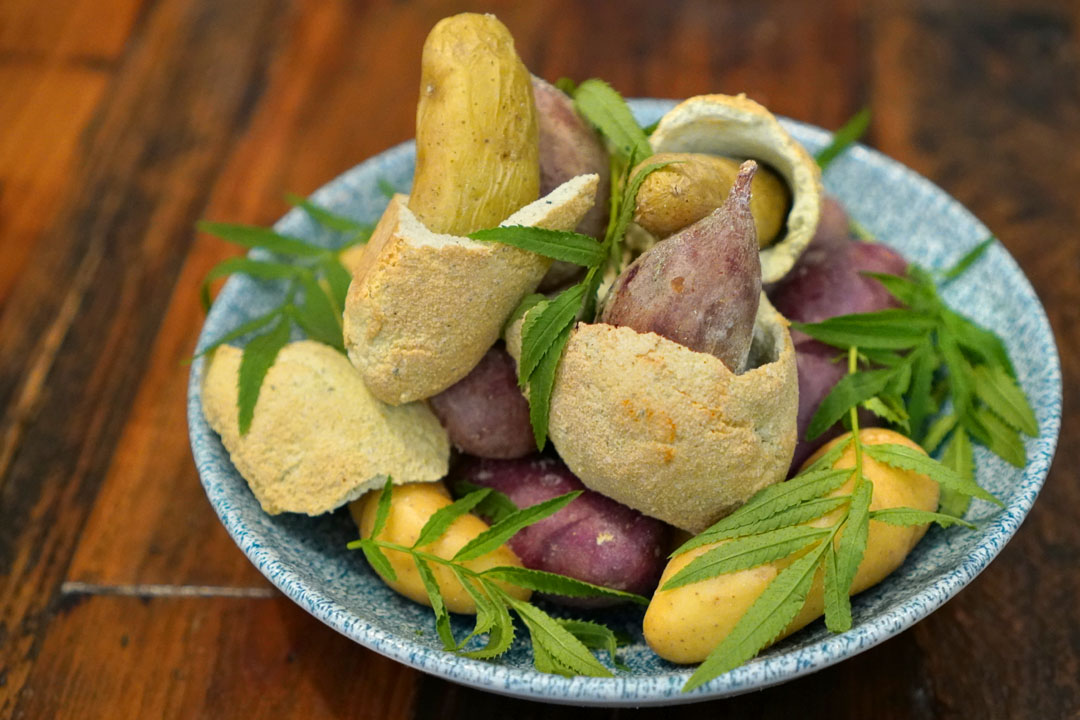
2: HUATIA | root vegetable, uchucuta, huacatay, queso fresco, salt
Salt-baked potatoes were surprisingly marvelous, coming out hearty and substantial to the bite. They were a fantastic pairing to the accompanying dip, which was a mouthwateringly cheesy, herby uchucuta sauce topped with huacatay powder, salt, and queso fresco. But as good as the potatoes were, the sweet potatoes were even better thanks to how their restrained, refined sweetness melded with the dip. A definite favorite of mine.
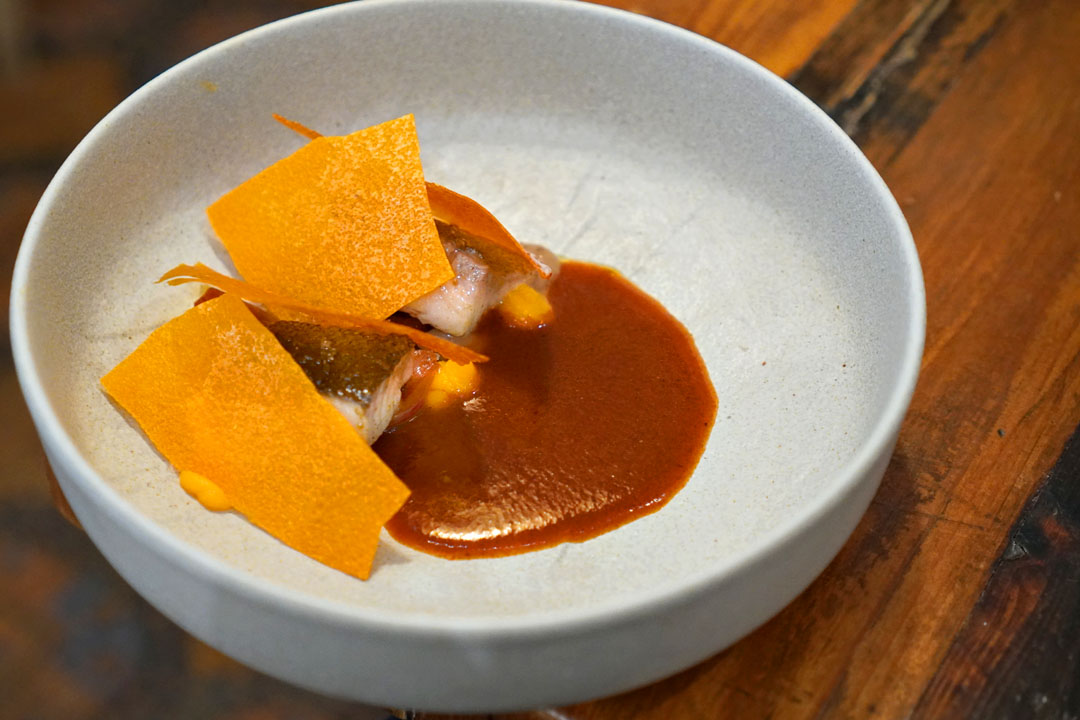
3: ESCABECHE | dry-aged black cod, red wine vinegar, onion, quail egg, sweet potato, ají amarillo, botija
One-week dry-aged sablefish was deeply flavored, and delicious just by itself, but also shined when taken with the onions, olives, and sweet potato-slash-ají amarillo crisps. However, the key here was that red wine vinegar-based escabeche marinade, which had this nearly BBQ sauce-esque piquancy that really set off the smoky savor of the fish.
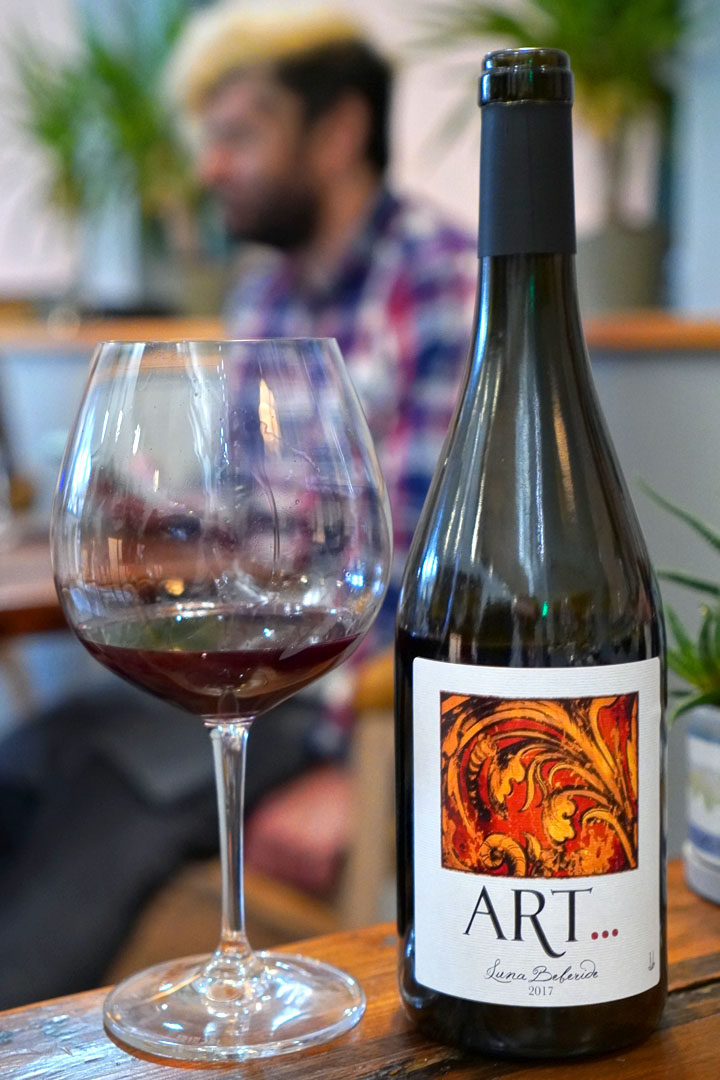
To pair with the next rice course, Kevin poured us a taste of the luna beberide art, bierzo, sp (2017). Produced from 100% Mencía, the wine showed off loads of ripe black fruit tinged with spice, smoke, and oak, along with a nice acidity to match up with the seafood below.
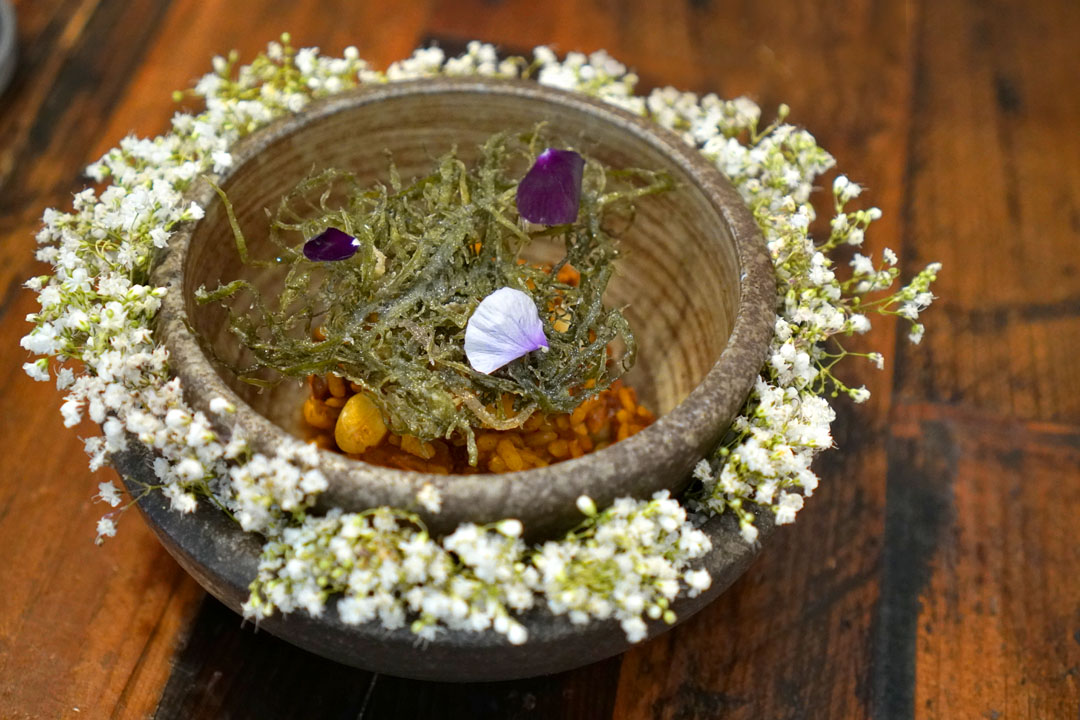
4: ARROZ A LA TACNEÑA | octopus, bomba rice, ají panca, chalaca
Inspired by a long-cooked stew from the south of Peru, this next course was another clear favorite. It consisted of bomba rice (typically used for paella) flavored with minced garlic and onion that'd been sautéed down for hours, along with red wine, ají panca, turmeric, tomato, Spanish octopus, fava bean purée, sea urchin (a bonus), chalaca onion relish with cilantro and lime, and a topping of fried yuyo seaweed. The end result was a bevy of cozy yet complex flavors that combined a real depth of savor with a seafood-driven sweetness, a well-placed herbaceousness, and a bevy of supporting components. I could've easily demolished a bigger bowl of this, and quite frankly, I'm pretty sure that I liked this more than any paella I've had.
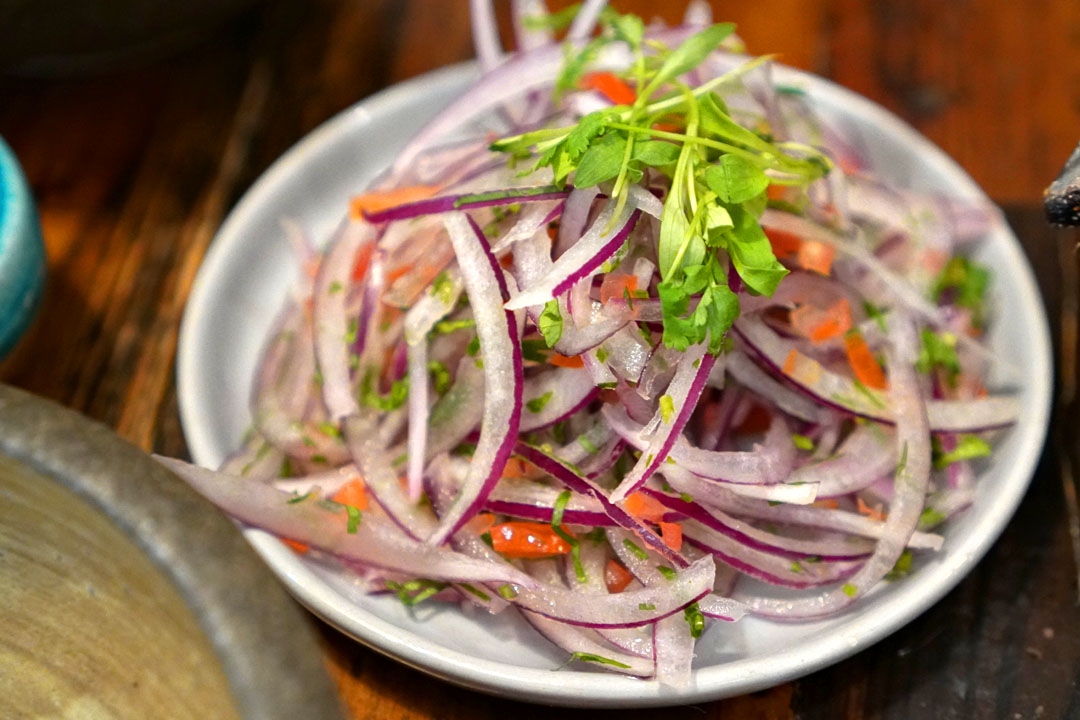
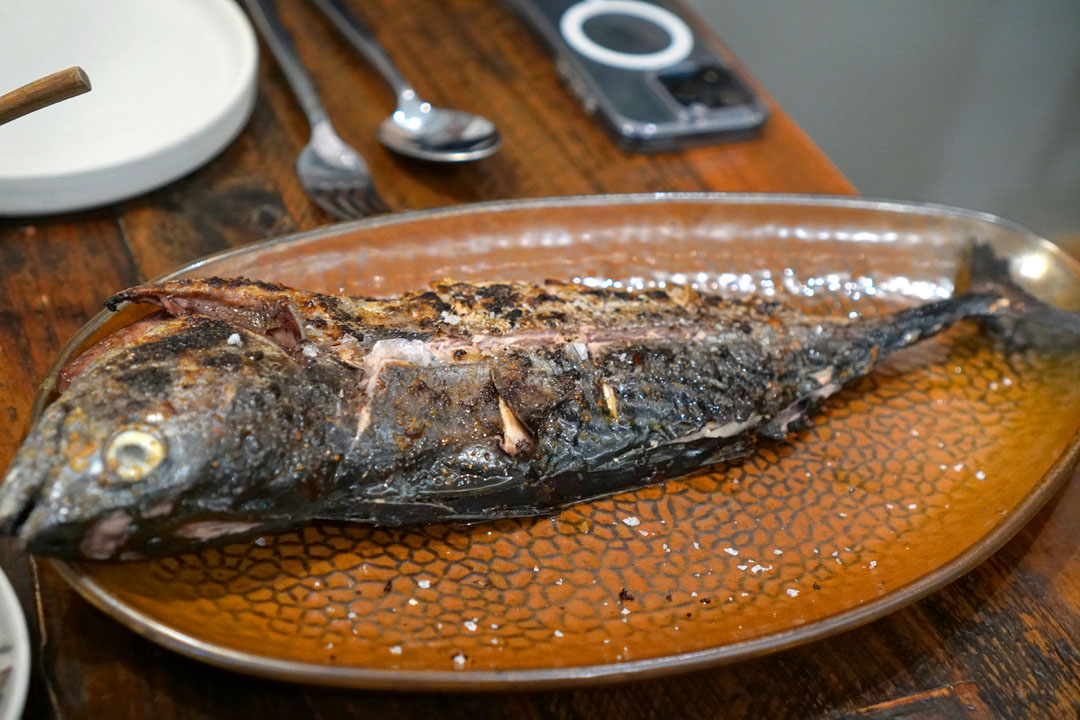
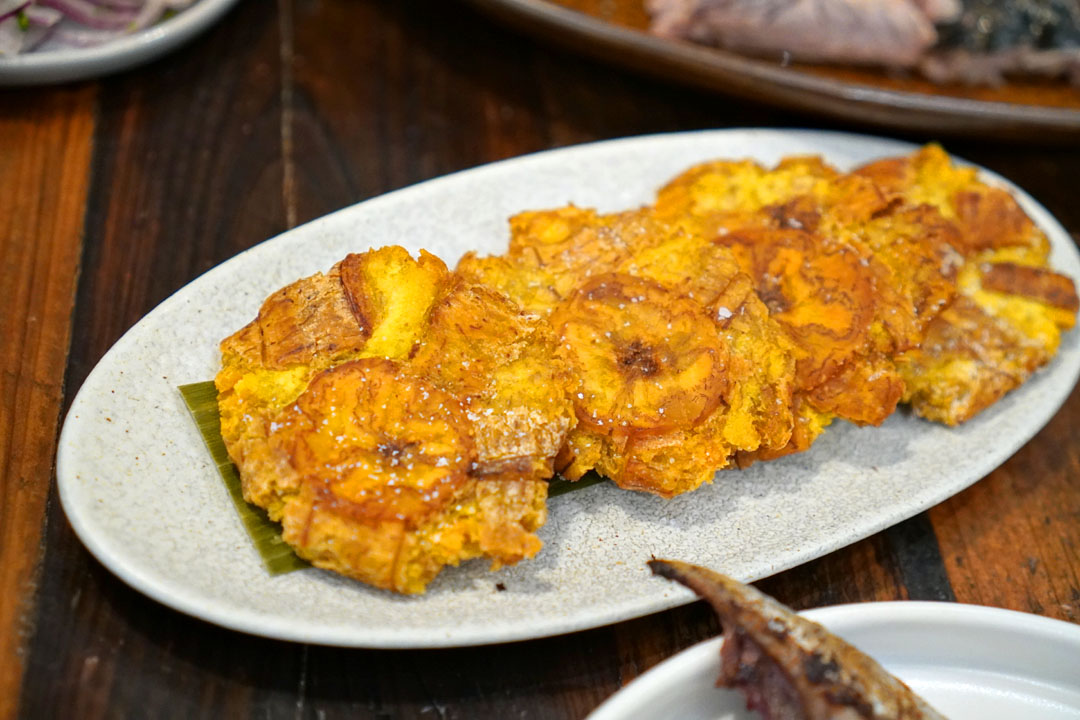
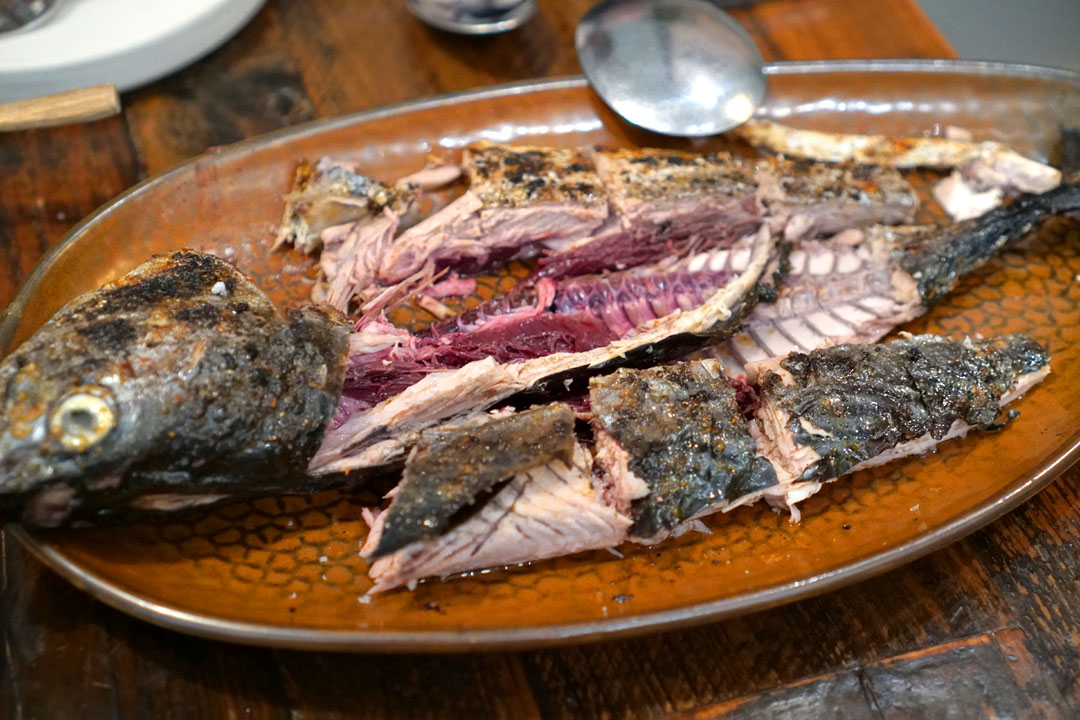
Supplement: Little Tunny (Yaito Katsuo) – Al Natural Josper | Grilled in our wood burning Spanish josper oven, seasoned with salt, oregano, cumin, black pepper, garlic powder. Served with green plantain patacones, parsley chimichurri and sarza criolla.
Our server stated that there are only three Jospers in DC, with the other two being at dLeña and The Grill (at The Wharf). I don't know how they're incorporating the ovens at the other two restaurants, but I can say that it was put to great use here. Our black skipjack was done justice, as I loved how well-imbued it was with elements of smoke and savor, while further seasoning managed to enhance the fish without ever becoming distracting. The zestiness of a salsa criolla served as the perfect foil, while the hearty, subtly sweet fried plantains helped even out the strong flavors going on.
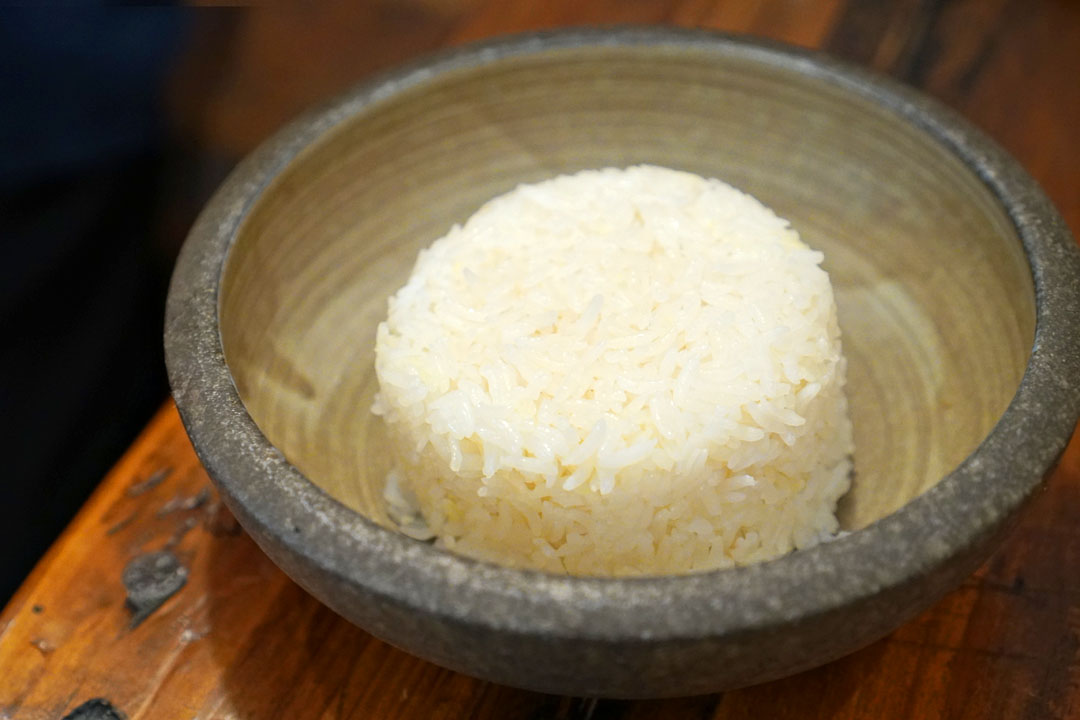
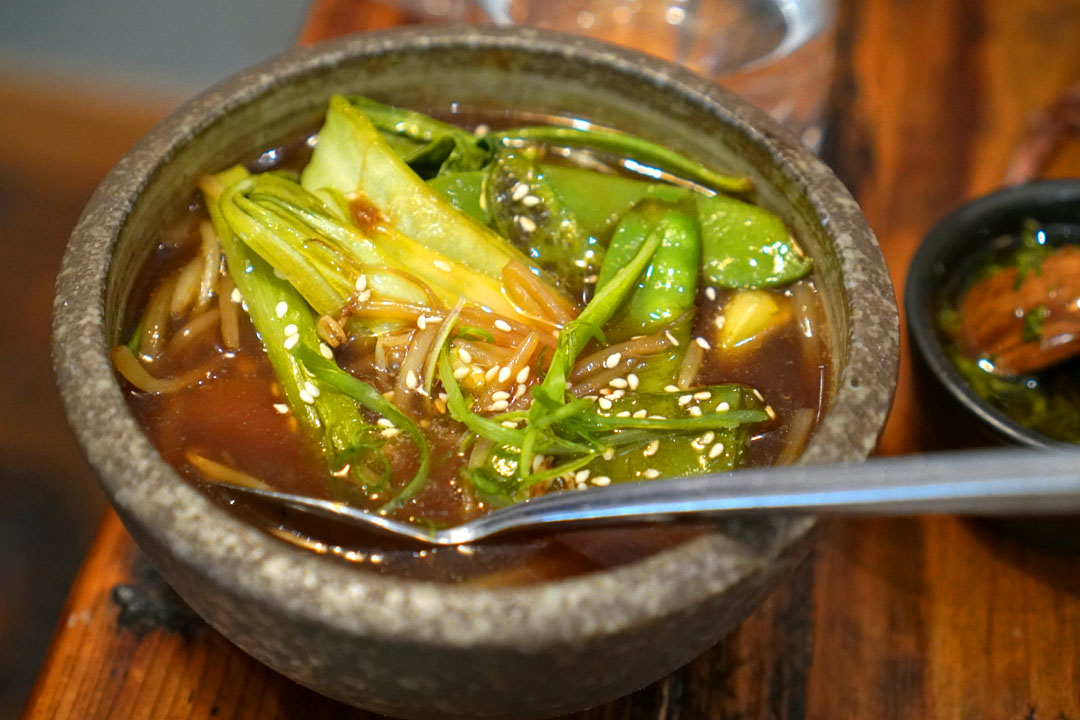
Since we were also curious about the Chifero-style preparation for our fish above, the kitchen was gracious enough to send out a serving of its associated sauce for us to try. Comprising soy, sesame, snap peas, bean sprouts, and scallions, it was a mash-up of Chinese and Peruvian that demonstrated a delectable amalgam of savory, tangy, and bright veggie flavors. A bowl of flawlessly-textured white rice was also provided, which really was exactly what I wanted in this case.
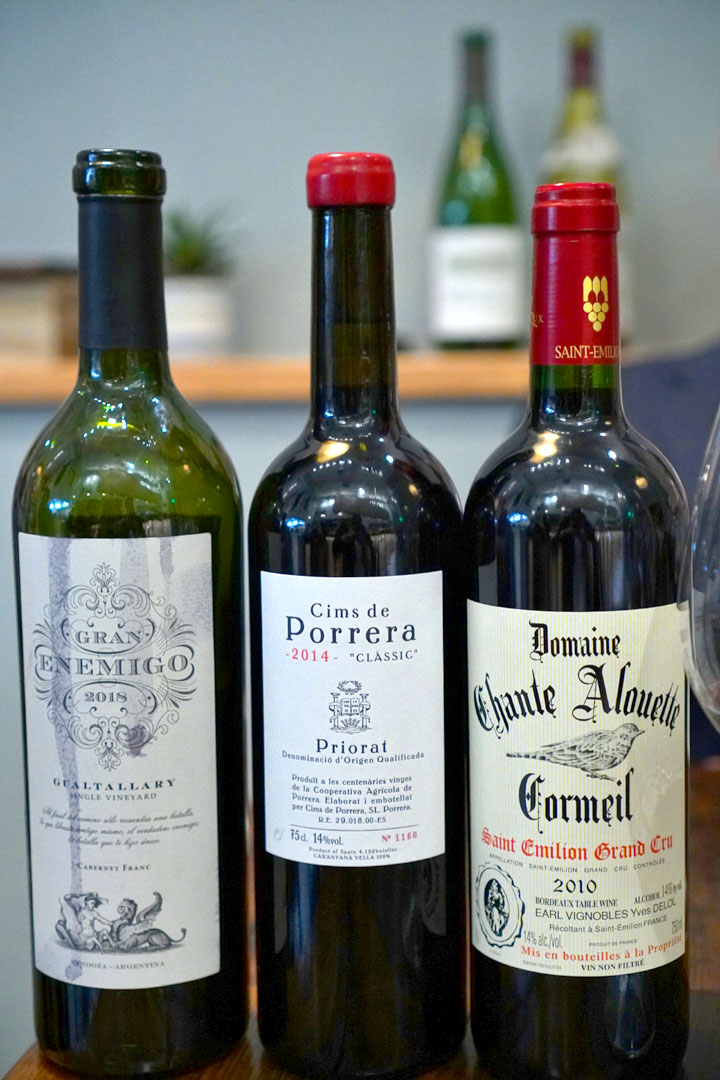
Next came pours of three different wines to enjoy with the subsequent pork course: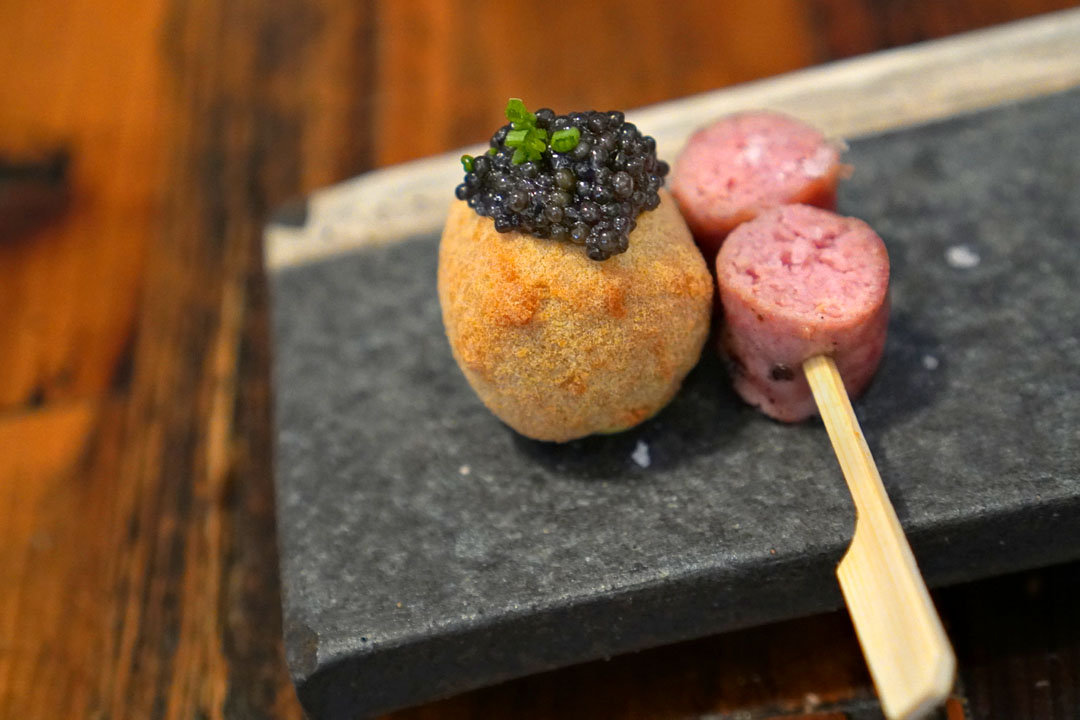

5: FIESTA DEL CERDO | iberico and autumn olive farms pork, sun-dried potatoes, peanuts, cinnamon, petrossian caviar
Our final savory course was a "pig festival" that showcased the bounty of pork in multiple ways:
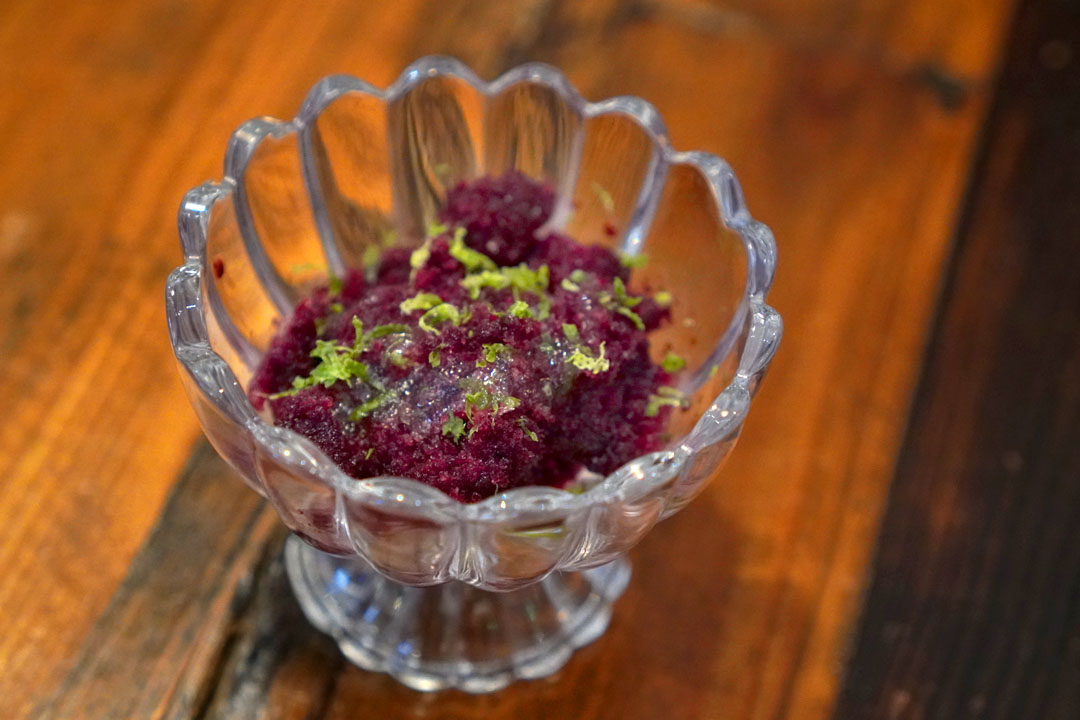
Pre-dessert duties were taken care of by this chicha punch ice, which was a nod to our welcome beverage and included lime zest and pisco gel. I found refreshingly cinnamon-like sweet spices, tarted up by hits of citrus, and the dish served as a welcome respite from all the porcine flavors I'd just experienced.
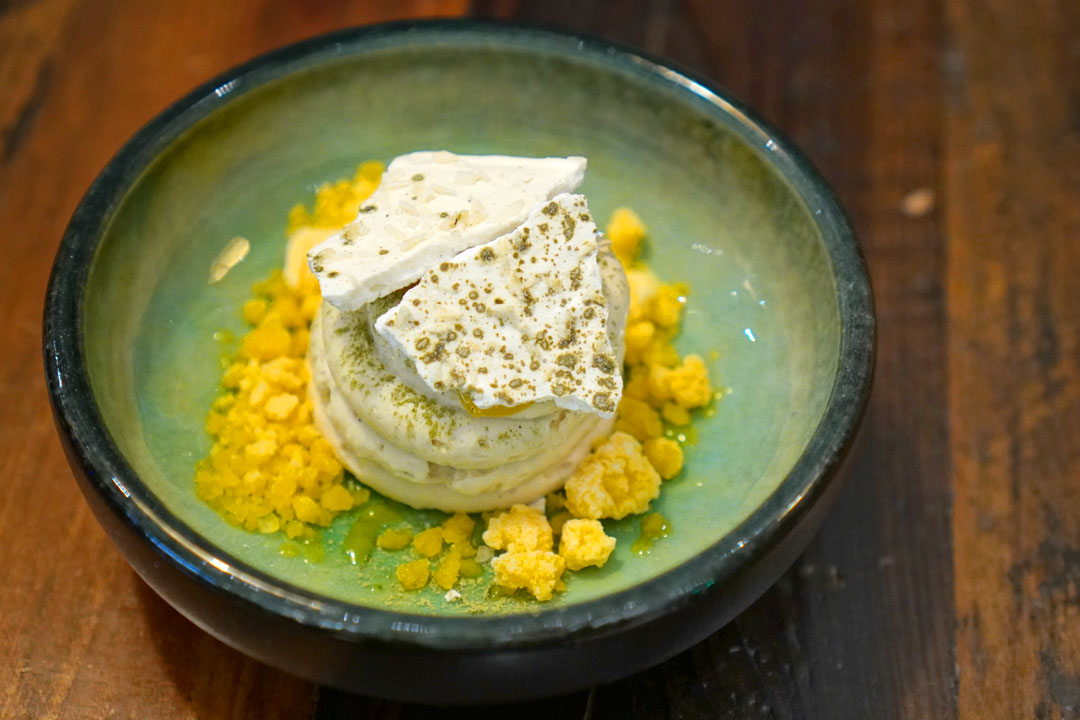
6: MACAMBO | macambo, passion fruit, huacatay, matcha, mango
In dessert proper, mocambo was used to make a white chocolate-esque ganache, which paired seamlessly with the tropical nuances from a passion fruit-huacatay gelato. Further facets were provided by a dusting of matcha powder, passion fruit gelée, mango, and a sprinkling of Maldon salt. I got some nice textures here, too.
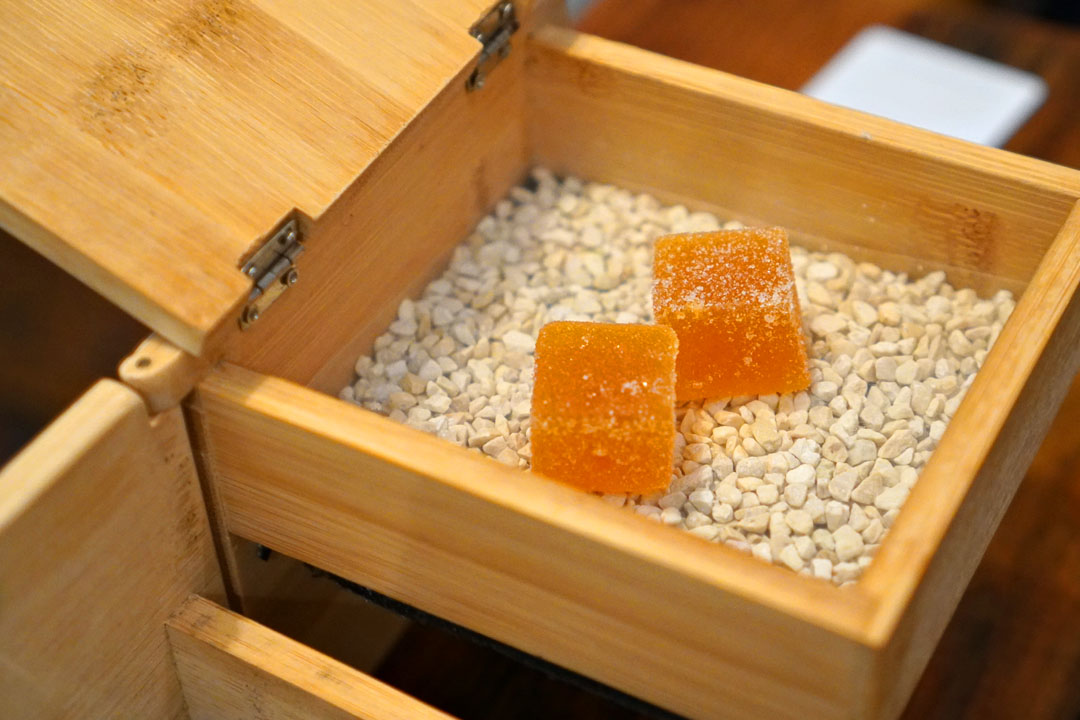

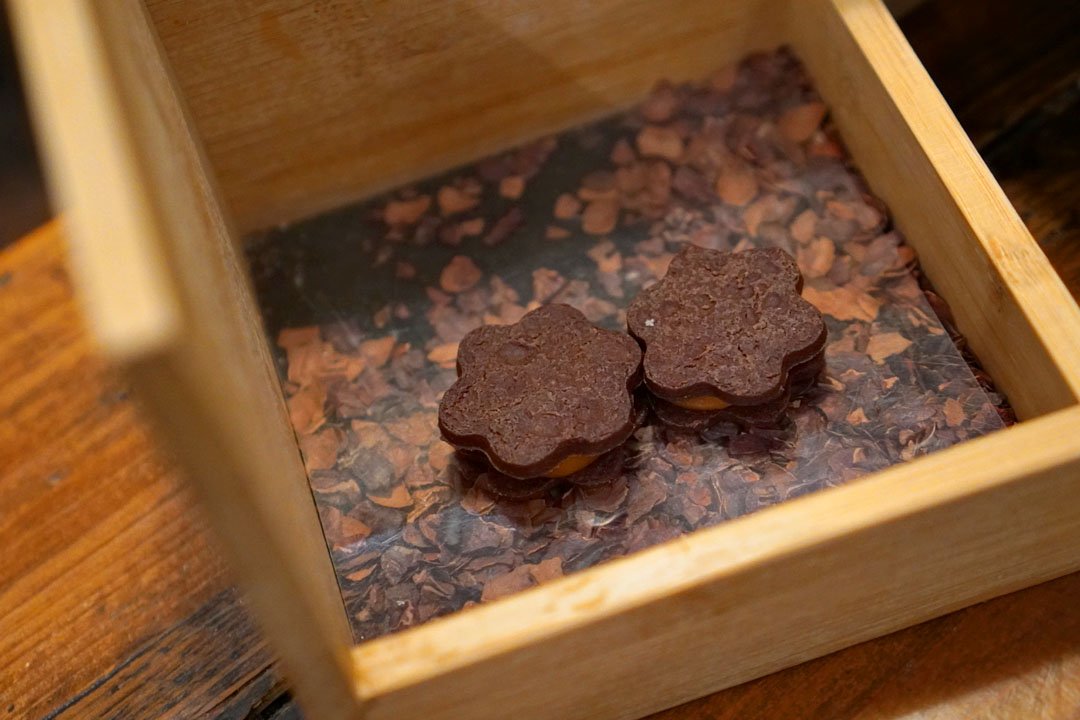
Mignardises were served in a rather schmancy wooden box. Tonight's selection included pâte de fruits made from passion fruit and ají charapita, a pricey pepper that provided a lovely warmth to go along with the jelly's fruitier notes. We also had chocolate bonbons, coated with strawberry and hiding guanábana ganache centers. Finally, there were chocolate alfajores, shaped like Michelin stars and composed of chocolate, dulce de leche, and butterscotch-y lúcuma.
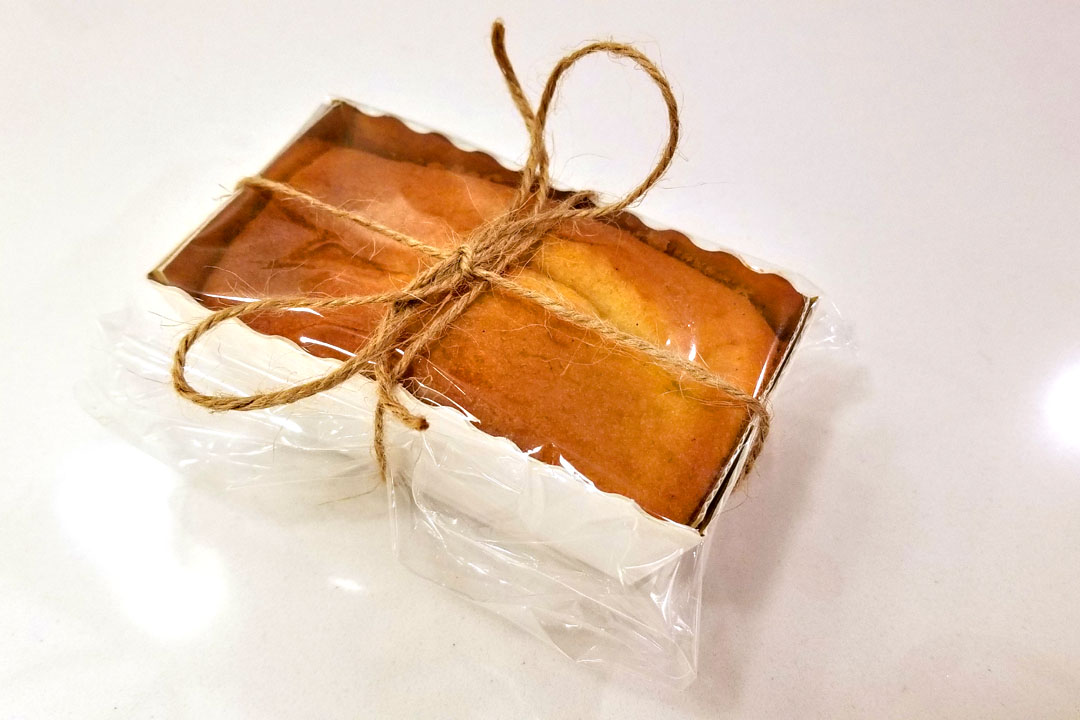
A citrus pound cake made with both orange and lemon zest was provided as a gift to take home.
Delgado considers Causa his magnum opus, and it's easy to see why. The Chef's cooking is such a bold, gusty take on modern Peruvian fare, and I was impressed by the level of creativity, finesse, and depth he was able to develop in his dishes. I really don't think anyone else in the US is doing it quite like this. The accolades are all rightfully deserved, and in fact, I'd say that this was the best Peruvian meal I'd ever had, easily. In terms of Delgado's next move, he's currently working on Cebicheria Chalaca, a ceviche-centric stall at The Square DC food hall that should open in the summer, so that could be something to look out for.
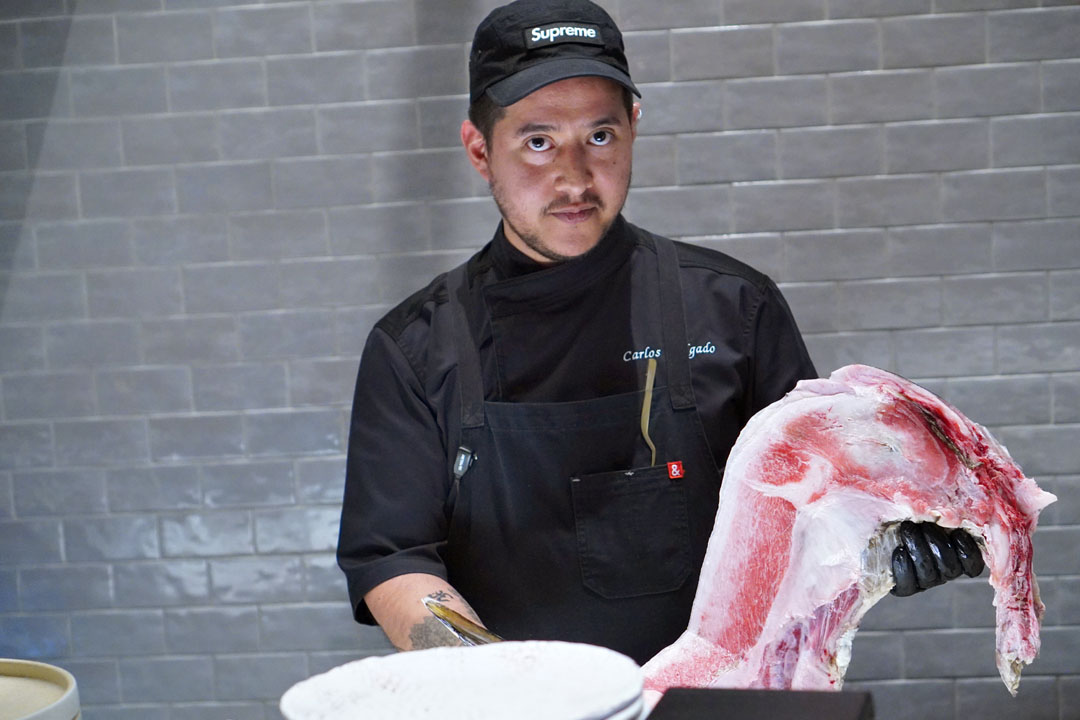
920 Blagden Alley NW, Washington, DC 20001
202-629-3942
www.causadc.com
Wed 02/28/2024, 08:30p-12:20a

For the final meal of my latest trip to DC, I ventured out to Shaw's historic Blagden Alley to check out a place that I'd wanted to try ever since it opened back in 2022. Causa is a tasting menu-only, seafood-focused, Michelin-starred contemporary Peruvian spot from Chef Carlos Delgado, in partnership with Chad Spangler and Glendon Hartley (the guys behind Service Bar), and has been generating quite a bit of buzz over the past year or so. Note that Causa is only one part of a dual-concept restaurant, with the upstairs Amazonia being more of a casual eatery with its bar and outdoor seating.
About the Chef: Delgado was born in 1990, and hails from La Perla, a district in the port city of Callao, near Lima. He first got interested in food thanks to his grandmother, and started cooking while he was still in Peru. He immigrated to the US around age 11, and began working in kitchens professionally when he was 16, without any formal training. After graduating from Walter Johnson High School in 2008, he applied to the Culinary Institute of America the following May, but didn't end up attending. Early on in his career, Delgado was able to work at Bryan Voltaggio's Volt, and apparently even staged at El Bulli.
However, it was only in 2011 that he began making a name for himself as CdC at the now-shuttered Smith Commons, located on DC's H Street Corridor. He was named Exec Chef there in 2012, but left that same year to join the opening team at Bóveda, a Latin American spot in the West End. In May 2013, while still at Bóveda, he launched a bicycle-based ice cream sandwich concept called CreamCycle, then went to cook at The Caucus Room Brasserie and develop the menu for Smith Public Trust. From there, Delgado opened Peruvian eatery Ocopa in August 2014 as Executive Chef/Partner, but only stayed for about a year (it was there where he would first meet Hartley, who was helming the bar program).
In September 2015, he went to work at José Andrés' China Chilcano. He started out as a sous, but was promoted to head chef a year later, following the departure of Omar Rodriguez. Things were going relatively well until the pandemic, when Delgado was furloughed (though he was later brought back in a consulting role the following March). He subsequently helped with the debut of Taqueria Xochi, the brainchild of Teresa Padilla (his pastry chef at China Chilcano), then teamed up with Hartley and Spangler. The Service Bar guys had taken over a newly-constructed building in Blagden Alley back in 2019 (next door to the old Rogue 24), which was initially supposed to be an outpost of Jose Garces' Village Whiskey. Initial plans were to debut a pandemic-friendly, ceviche- and anticucho-focused spot called Chelita (named after the Chef's abuela), but that never came to fruition.
Instead, Amazonia dropped on May 4th, 2022, while Causa bowed that August, to almost immediate acclaim no less. In January 2023, Causa landed the #8 spot on Washingtonian's list of "The 100 Very Best Restaurants," while just a couple months later, the place was deemed a "Best New Restaurant" finalist by James Beard. In May 2023, The Washington Post gave Amazonia/Causa the top spot on its Spring Dining Guide. This was followed a couple months later by a "New Restaurant of the Year" win at the RAMMY Awards. Causa received a Michelin star in November last year, and in January, it was named the best restaurant in DC by Washingtonian.

Otorongo Ciego [$19.00] | park cognac, ardbeg scotch, banana combier, crème de cacao, lime, turmeric, spices, chuncho bitters
We arrived early for our reservation, and thus headed up to Amazonia's bar to kill some time. We were able to try two cocktails, and this first one definitely showed off the peatiness of the whisky, combined with sweet-tart spices, chocolate-y notes, and just enough fruit. Multifaceted and smoky, yet refreshing.

Sana Sana [$17.00] | Fords Gin, Clarified Pineapple, Clarified acidulated orange juice, Aji Amarillo-coconut reduction
Next up was Amazonia's entry into the "Blagden Brawl" cocktail contest, which was a friendly competition between this place and nearby spots Calico, Death & Co, Lost & Found, and Tiger Fork. It was lovely, and the first thing that struck me was the perky, lingering acidity from that OJ, which formed the backbone of the drink. I also got overarching nuances of pineapple, while the ají came through on the finish.


The evening's menu is shown above, and was priced at a pre-paid $175 a head (up from the previous $125, and only $85 when the place first opened), plus $35 service, $21 tax, and a $5 Tock order fee. Beverage-wise, there's a wine pairing at $125, along with a small selection of cocktails, a couple beers, and a compact, Old World-leaning wine list. Corkage is $50 a bottle, or $75 per magnum, with apparently no limit, though our fees tonight were comped, I'm guessing because we shared our booze generously with the Chef and his staff. Click for larger versions.

Upon being seated, a towelette was quickly provided to us. It was moistened with agua de florida, a sort of aromatized water traditionally used for aromatherapy and cleansing rituals in Peru.

We were then presented with a house-fermented chicha morada kombucha, which served as a welcome beverage. The drink demonstrated a generally sweet-n-spicy character, but one perked up by a zippy, funky astringency and hints of citrus. It certainly did a nice job awakening the palate.

Canapé duties were handled by the restaurant's namesake dish. Tonight's version of the iconic causa limeña comprised yellow potato, ají amarillo, lime, salt, cucumber, avocado, and a scallop salad (celery, onion, ají amarillo aioli), all encased in sheets of onion "paper" to enable easier eating. The key for me was how vibrantly the salinity of the scallop was conveyed, tempered by potato and augmented by the pungency of the ají, with the avocado and cucumber lightening the mood.

Next came a parade of amuse bouches. First was a tartare of bluefin (mostly otoro, but some akami), which showed off a rich umami character that was juxtaposed against capers, red onion, cilantro, tonburi, and shiso leaf, among other ingredients. I was also a big fan of the bite's crunchy fried tart shell, which was delightfully savory in its own right, almost reminding me of prawn crackers.

We brought along a couple bottles to drink, both of which were expertly served by Kevin, our sommelier. First was the 2016 Domaine Roulot Meursault, which was slightly closed at the beginning of the night. I got a nose of juicy yellow fruits interlaced with butter, while the palate displayed more of that fresh fruit, along with spicy oak. With more time, butterscotch aromas appeared, but quickly dissipated, replaced with tropical fruits; taking a sip, I found the wine drier, more mineral-driven, with a citrusy quality. With further time, the Burgundy began smelling more saline, and taste-wise, I found things soft, savory, buttery, and more harmonious overall.

Maine mussels came out lightly cooked, but were muddier tasting than I would've liked, though the bite's tangy tomato emulsion and coconut-like sweetness did help even things out.

These were just about the tiniest scallops I'd ever seen, but really delivered in the taste department. I was impressed by the sharp, piercing heat present, and how that complemented, but never overwhelmed the bivalve's inherent sweetness.

Unfortunately, I failed to note what exactly these next bites were, but I think we're dealing with a riff on the classic dish of pulpo al olivo. In any case, I really enjoyed the piquancy of those Botija olives, and how that played with the course's beguiling, floral spice and creamy avocado mousse, all while the rice crackers imparted a savory crunch to the mix.

In this bonus bite, the sweet salinity of sea urchin was forcefully exhibited, set against the zippiness of onion relish and the moderating effect of a hearty Peruvian corn cake.

Our second BYOB bottle was something much older, the 1978 Paul Jaboulet Aîné Côte-Rôtie Les Jumelles. Initial whiffs were super meaty, almost beef jerky-esque in fact, while on the palate, the Syrah was soft and silky, its roasted meat qualities joined by tart red fruit. After some time, some cacao made itself known on the nose, while taste-wise, the wine became more astringent. With further time, the bouquet got quite a bit more herb-forward, though it was still meaty, and tasting it, I found the liquid smokier and indeed, more herbaceous. Overall, this was definitely mature, though never over the hill, and I was very glad that I got to taste it tonight.

1: CEBICHE DE KANPACHI | kanpachi, rocoto, chulpi, huacatay
The meal's first proper course brought out the most unconventional looking, cleverest ceviche I'd ever seen. I loved the dish's sour heat, coconut-y sweetness, herbiness from the huacatay, and brazen acidity, which all harmonized with the amberjack without ever getting in the way. And the icing on the cake? The crunch and salt from the cancha (toasted corn). A super promising start that made a bit of a statement and really set the tone for the rest of the dinner.

Diners at Causa can supplement their meals with a selection of whole fish from the restaurant's fish market, which can then be presented in a variety of cold and hot preparations. We opted for the uncommon Little Tunny (Yaito katsuo) 1lb 14oz, Japan [$180] (sourced from Tokyo's Toyosu Market I believe), prepared tiradito and al natural josper style, as recommend by our server.

Supplement: Little Tunny (Yaito Katsuo) – Tiradito | Thinly sliced on a flat plate, and garnished with pearl red onion, cilantro, olive oil and maldon salt with ají amarillo leche de tigre. The cut for a tiradito is slightly thinner than a sashimi cut.
And here we see our selected suma katsuo, arranged in a rose pattern in what must be the most beautiful plate of tiradito I've encountered. Taken alone, the fish ate soft and supple, with a super clean, slightly sweet brine. However, the crux here was that leche de tigre, which had this wonderful acidity and delicate heat that really allowed the fruitiness of the chili pepper to shine. A consummate marriage of Peruvian flavors and Japanese technique.


Next came an extra course of bluefin sashimi, presented in three disparate forms: two-and-a-half-month dry-aged Japanese toro, one-month dry-aged Mexican chutoro, and two-week dry-aged akami. The fish was accompanied by a yuzu-lime-ají amarillo ponzu, fermented kizami wasabi (the Chef's favorite), and pickled Peruvian sweet drop peppers. I began with the red meat, and found that it had this sophisticated umami character that worked swimmingly with either the ponzu or wasabi. The chutoro, on the other hand, was soft but sinewy, with a cool, refined brine that really linked up well with the sweet heat of the chilies. Last up was the toro, which was an altogether different story. Think ultra fatty, oily, dense, and firm--it matched perfectly with the wasabi, though with the ponzu, I wanted the savoriness of the soy to speak up more.

We were provided a pour of the prieuré saint-jean de bébian, coteaux du languedoc, fr (2020) to go along with the potato course below. Based on Roussanne, the wine demonstrated a generally tropical fruit-driven, yet dry style, with elements of lemon and spice supporting a savory, saline spine.


2: HUATIA | root vegetable, uchucuta, huacatay, queso fresco, salt
Salt-baked potatoes were surprisingly marvelous, coming out hearty and substantial to the bite. They were a fantastic pairing to the accompanying dip, which was a mouthwateringly cheesy, herby uchucuta sauce topped with huacatay powder, salt, and queso fresco. But as good as the potatoes were, the sweet potatoes were even better thanks to how their restrained, refined sweetness melded with the dip. A definite favorite of mine.

3: ESCABECHE | dry-aged black cod, red wine vinegar, onion, quail egg, sweet potato, ají amarillo, botija
One-week dry-aged sablefish was deeply flavored, and delicious just by itself, but also shined when taken with the onions, olives, and sweet potato-slash-ají amarillo crisps. However, the key here was that red wine vinegar-based escabeche marinade, which had this nearly BBQ sauce-esque piquancy that really set off the smoky savor of the fish.

To pair with the next rice course, Kevin poured us a taste of the luna beberide art, bierzo, sp (2017). Produced from 100% Mencía, the wine showed off loads of ripe black fruit tinged with spice, smoke, and oak, along with a nice acidity to match up with the seafood below.

4: ARROZ A LA TACNEÑA | octopus, bomba rice, ají panca, chalaca
Inspired by a long-cooked stew from the south of Peru, this next course was another clear favorite. It consisted of bomba rice (typically used for paella) flavored with minced garlic and onion that'd been sautéed down for hours, along with red wine, ají panca, turmeric, tomato, Spanish octopus, fava bean purée, sea urchin (a bonus), chalaca onion relish with cilantro and lime, and a topping of fried yuyo seaweed. The end result was a bevy of cozy yet complex flavors that combined a real depth of savor with a seafood-driven sweetness, a well-placed herbaceousness, and a bevy of supporting components. I could've easily demolished a bigger bowl of this, and quite frankly, I'm pretty sure that I liked this more than any paella I've had.




Supplement: Little Tunny (Yaito Katsuo) – Al Natural Josper | Grilled in our wood burning Spanish josper oven, seasoned with salt, oregano, cumin, black pepper, garlic powder. Served with green plantain patacones, parsley chimichurri and sarza criolla.
Our server stated that there are only three Jospers in DC, with the other two being at dLeña and The Grill (at The Wharf). I don't know how they're incorporating the ovens at the other two restaurants, but I can say that it was put to great use here. Our black skipjack was done justice, as I loved how well-imbued it was with elements of smoke and savor, while further seasoning managed to enhance the fish without ever becoming distracting. The zestiness of a salsa criolla served as the perfect foil, while the hearty, subtly sweet fried plantains helped even out the strong flavors going on.


Since we were also curious about the Chifero-style preparation for our fish above, the kitchen was gracious enough to send out a serving of its associated sauce for us to try. Comprising soy, sesame, snap peas, bean sprouts, and scallions, it was a mash-up of Chinese and Peruvian that demonstrated a delectable amalgam of savory, tangy, and bright veggie flavors. A bowl of flawlessly-textured white rice was also provided, which really was exactly what I wanted in this case.

Next came pours of three different wines to enjoy with the subsequent pork course:
- el enemigo cabernet franc gran enemigo, gualtallary, ar (2018) – Hailing from Argentina, this one was rich and jammy at first whiff, but on the palate, its dark berry notes played with a supporting cast of perky tannins and smoke, making for a drier than expected drinking experience.
- cims de porrera classic, priorat, sp (2014) – Produced from Carignan, this was all about sharp, mineral-driven, slightly astringent red fruits on the nose, white taste-wise, I found grippy tannins combined with herb and a sweet backbone of dark berries. It certainly stood up to the richness of the meat below.
- domaine chante alouette cormeil, st emilion grand cru, fr (2010) – An 80/20 mix of Merlot and Cabernet France, this Bordeaux was intended to accentuate the cinnamon elements in our next course with its generally smoky, leathery, tannic nature, augmented by herb, spice, and black fruits.


5: FIESTA DEL CERDO | iberico and autumn olive farms pork, sun-dried potatoes, peanuts, cinnamon, petrossian caviar
Our final savory course was a "pig festival" that showcased the bounty of pork in multiple ways:
- I started with the deep-fried, panko-coated head cheese croqueta, which incorporated cinnamon and Peruvian spices, and was joined by a huacatay aioli and Petrossian caviar. Think doughy, salty, and delightfully, unabashedly "hammy."
- Next to the croquette was some salchicha, a serving of housemade chorizo with Peruvian seasoning and minced garlic, all stuffed in a lamb casing and roasted on the robata grill for a satisfying touch of smoke.
- Moving to the larger plate now, we have shoulder braised low and slow, with ají panca-boosted adobo, chicha de flora (fermented corn beer), soy sauce, and peanuts for a bit of toastiness. The pork was as rich and cozy as you'd expect, with a tangy, tomato-like character to boot.
- We also had ibérico de bellota tenderloin from a farm in Texas, lightly seasoned and grilled in the Josper to really highlight the pure, smoky, unmitigated essence of the pig.

Pre-dessert duties were taken care of by this chicha punch ice, which was a nod to our welcome beverage and included lime zest and pisco gel. I found refreshingly cinnamon-like sweet spices, tarted up by hits of citrus, and the dish served as a welcome respite from all the porcine flavors I'd just experienced.

6: MACAMBO | macambo, passion fruit, huacatay, matcha, mango
In dessert proper, mocambo was used to make a white chocolate-esque ganache, which paired seamlessly with the tropical nuances from a passion fruit-huacatay gelato. Further facets were provided by a dusting of matcha powder, passion fruit gelée, mango, and a sprinkling of Maldon salt. I got some nice textures here, too.



Mignardises were served in a rather schmancy wooden box. Tonight's selection included pâte de fruits made from passion fruit and ají charapita, a pricey pepper that provided a lovely warmth to go along with the jelly's fruitier notes. We also had chocolate bonbons, coated with strawberry and hiding guanábana ganache centers. Finally, there were chocolate alfajores, shaped like Michelin stars and composed of chocolate, dulce de leche, and butterscotch-y lúcuma.

A citrus pound cake made with both orange and lemon zest was provided as a gift to take home.
Delgado considers Causa his magnum opus, and it's easy to see why. The Chef's cooking is such a bold, gusty take on modern Peruvian fare, and I was impressed by the level of creativity, finesse, and depth he was able to develop in his dishes. I really don't think anyone else in the US is doing it quite like this. The accolades are all rightfully deserved, and in fact, I'd say that this was the best Peruvian meal I'd ever had, easily. In terms of Delgado's next move, he's currently working on Cebicheria Chalaca, a ceviche-centric stall at The Square DC food hall that should open in the summer, so that could be something to look out for.

0 Comments:
Post a Comment
Subscribe to Post Comments [Atom]
<< Home